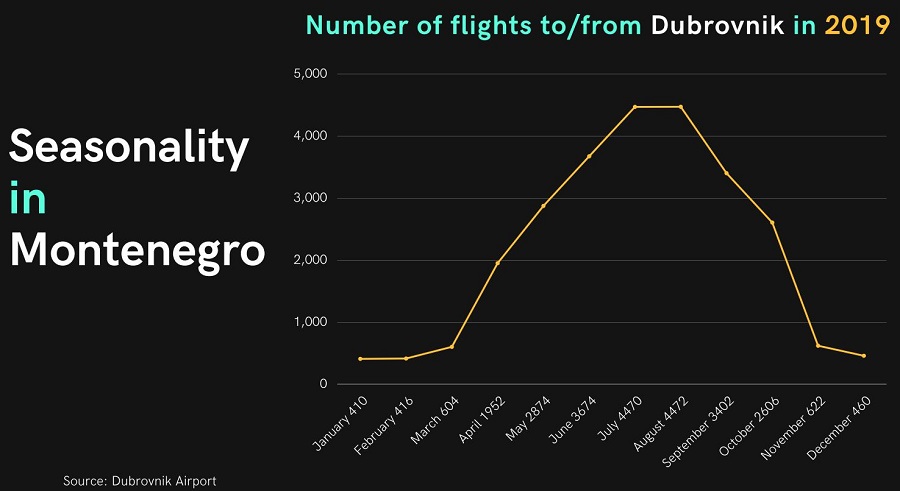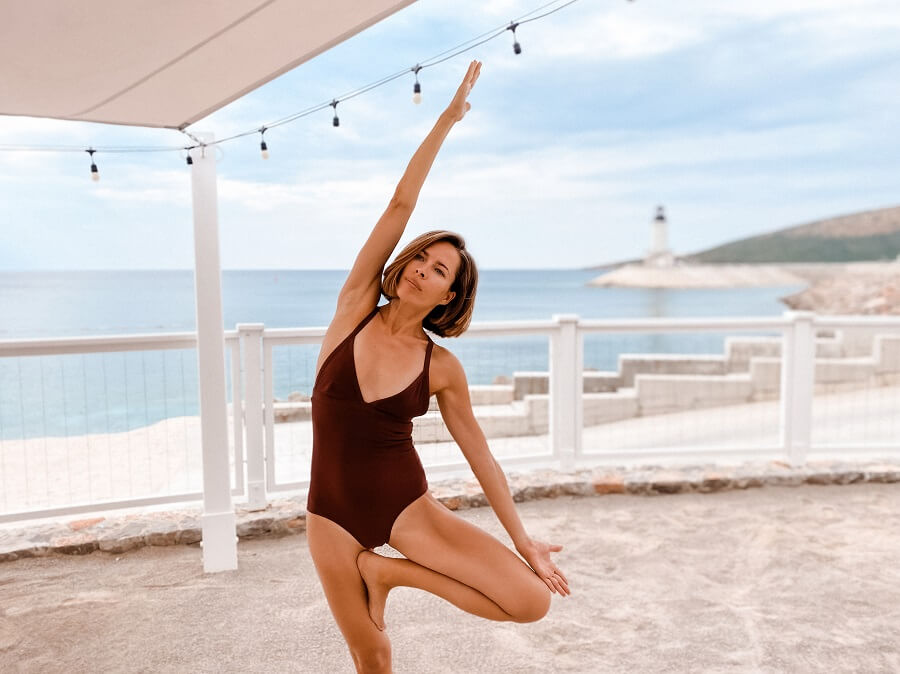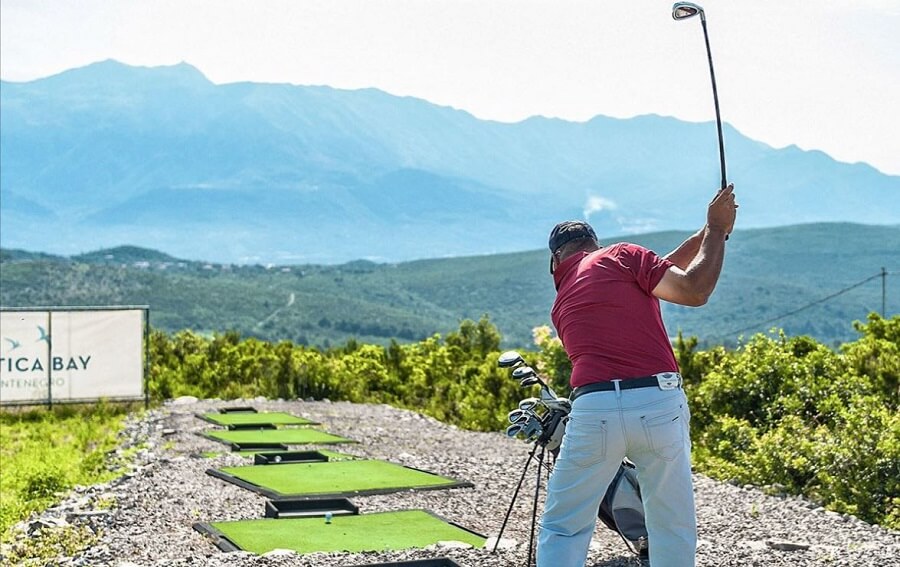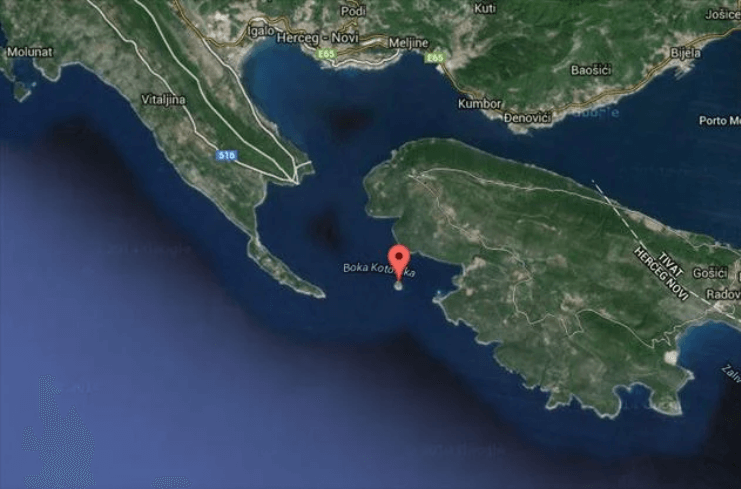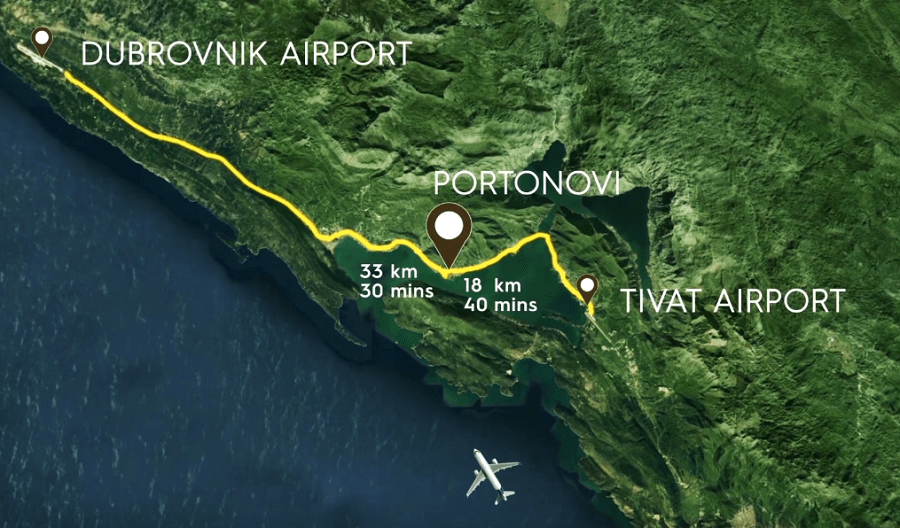Croatian Minister Condemns Threats against Montenegrin Croat Minority Official
ZAGREB, 6 Aug 2021 - Croatia's Foreign and European Affairs Minister Gordan Grlić Radman has condemned threats against the leader of the Croat Civic Initiative in Montenegro, Adrian Vuksanović.
The threats against the leader of the Croat minority party were made in comments on the In4s portal, with some of the readers saying that Croats should have been killed or expelled from the former Yugoslavia and that Vuksanović would be "among the first to pay for it."
Grlić Radman condemned the threats in a conversation with Vuksanović and the leader of the Croat National Council, Zvonimir Deković, noting in a Twitter post that he had discussed the matter with his Montenegrin counterpart Đorđe Radulović and that minority protection was the focus of bilateral relations.
The threatening messages against Vuksanović were posted under a text in which he responded to Montenegrin Parliament Speaker Aleksa Bečić's comment on the 1995 Operation Storm, with which Croatia put an end to a four-year Serb armed insurgency, in which Bečić said "May Storm never happen again."
"You can rest assured that the military and police, liberating Operation Storm will never happen again because nobody will ever dare again to conquer Croatian territory, expel its residents and heartlessly shell towns across Croatia, including its capital, for four years," Vuksanović said in response to Bečić's comment as carried by In4s.
For more on politics, CLICK HERE.
After Croatia, Montenegro Digital Nomad Visa One Step Closer to Becoming Reality
June 1, 2021 - The energy of the Croatian digital nomad visa is spreading through the region as the Montenegro digital nomad visa is in the works.
Bankar.me reports that the Ministry of Public Administration, Digital Society, and Media has sent a public invitation to organizations, associations, and individuals to get involved in the initial phase of preparing a Program for Attracting Digital Nomads and Encouraging Foreign Investments in Montenegro until 2025.
According to the invitation published on May 27, the consultations of the interested public in the initial phase of the Program will last for 28 days from the publication date of this invitation.
The invitation states, among other things, that priorities and challenges can be proposed in the consultation process when it comes to conditions for defining the status of digital nomads and incentives for foreign investments, including other important topics that this Program may cover.
As stated in the invitation, the Ministry of Public Administration, Digital Society, and Media will update all received initiatives, proposals, suggestions, and comments should be updated and, after the consultation, a report should be prepared containing an overview of the participants in the consultation and an overview of received initiatives, proposals, suggestions, and comments. It will then be published on its website http://www.mju.gov.me/ministarstvo and portal e-administration https://www.euprava.me/ and submitted to the participants in the consultation within seven days from the expiration of the aforementioned deadline of 28 days.
"The Ministry of Public Administration, Digital Society, and Media will consider and take into account all received initiatives, proposals, suggestions, and comments during the preparation of the Program for Attracting Digital Nomads and Encouraging Foreign Investments in Montenegro until 2025," the Ministry said.
This is one of the most important steps in bringing digital nomads to Montenegro, which will be among the first countries to grant a visa to this tourist group.
A digital nomad visa is a great chance for Montenegro
Several countries have already legally regulated the issue of visas for digital nomads. Estonia became the first country in the world to officially start with digital nomad visas. Shortly afterward, other countries such as Barbados, Bermuda, Georgia, Anguilla, the Cayman Islands, Dubai, and Mauritius followed in Estonia's footsteps. The initiative was first shown by Croatia from the surrounding countries, which is most similar to Montenegro with its beaches and beautiful destinations for tourists.
One of those who realized in time that Montenegro is an ideal destination for digital nomads is Milovan Novakovic, CEO, and partner of Colliers International. Novakovic and his team have taken the initiative with the Government to approve digital nomad visas as soon as possible. The team includes Dutch entrepreneur Jan de Jong, one of the most deserving of Croatia on the list of countries that approve digital nomad visas. As they say, there will be support from Estonia, which was the first country to regulate the visa legally.
Novakovic believes that Montenegro is a very suitable destination for digital nomads and has a satisfactory infrastructure, so in that sense, it would be necessary to introduce a one-year digital nomad visa and harmonize the Law on Foreigners as well as relevant bylaws, all to create a suitable legal framework that would encourage the arrival of digital nomads in Montenegro.
At the end of last year, he launched an initiative to position Montenegro as a new popular destination for digital nomads because, as he said earlier, a digital nomad visa would be a special benefit to improve tourism and extend the season to a whole year.
"Covid-19 has accelerated this industry as well, and more and more people in the world want to do their job remotely. Research predicts that by 2035, one billion people will work "remotely." If Montenegro regulates the visa program for digital nomads, a special benefit would be improving tourism and extending the season to the whole year. Digital nomads would no longer come to Montenegro for just a couple of weeks, but for a minimum of a few months or a whole year," Novakovic said.
For all, you need to know about digital nomads in Croatia, bookmark our dedicated section.
Identity of Boka Kotorska Croatians - Scientific Conference by Ivo Pilar Social Research Institute
May 12, 2021 - Earlier in May, Boka Kotorska, in the town of Tivat in Montenegro, was the host of the scientific conference "Identity of Boka Kotorska Croatians" which will introduce changes in Croatian education.
Croatia has a big diaspora, no secrets there, but its worldwide spread makes you miss the region.
In Boka Kotorska, in Montenegro, Croatia's first neighbor on the southern border after Dubrovnik, not only is there a huge population of Croatians, but they also have a significant cultural impact on the area. So significant it even calls for social science to step in.
As Ivo Pilar Social Research Institute reported on its website, May 6 to 9 saw the conference “Identity of Boka Kotorska Croatians“. The three-day conference gathered crucial scientific institutes in Croatia to the town of Tivat in the Bay of Croatian Saints. Headed with Ivo Pilar Social Research Institute, Croatian Catholic University, Croatian Studies Faculty, Institute of Croatian Language and Linguistics as well as Institute for Historical Sciences in Zadar attended the conference while Croatian ministries of European, and Foreign Affairs, Science and Education, Culture, and Media, as well as Croatian Central State Office for Croatians Outside of the Republic of Croatia, founded the event.
„The scientific conference went well as well as signing conclusions with recommendations that that knowledge on Bokelj Croatians we learned on this conference enter the Croatian national curriculum in important subjects. These conclusions are the crown of our efforts to launch this conference in public, not just in an academical way, but to massively popularize to ensure long-term benefits for Bokelj Croatians as for every educated citizen of Croatia and Montenegro“, said Dr. Željko Holjevac, head of the Ivo Pilar Social Research Institute.
Conference conclusions suggest additions to the curriculum documents on key definitions of Croatian National Identity to make space for Croatians outside Croatia, including Boka Kotorska Croatians. Identity features and creativity of Bokelj Croatians in Croatian education, and the book „Boka Kotorska - the Bay of the Saints and Croatian Culture“, by Vanda Babić to be the mandatory literature for tourist guides in Montenegro.
Final meetings at the conference, as well as sailing with a „Katica“ ship through Boka Kotorska Bay, Saw the participation of Boris Bastijančić, the advisor and representative of the Montenegro president and representer of Croatian parliament and MP, Zdravka Bušić, and others.
„I'm glad to be at this scientific conference, and I want to thank everyone's effort for something like this to happen in Boka Kotorska. I would especially like to thank students that took part in this and gave their part as young people who love the truth of Boka, the place of saints. This is a message that we too need to do something to mark this time with love, hope, and faith“, said the Kotorska bishop, mons. Ivan Štironja.
Some Croatians live outside of Croatia, but maybe you would want to live in Croatia. Learn more about living in Croatia on our TC page.
For more about the Croatian Diaspora, follow TCN's dedicated page.
Lekcije iz Crne Gore: divlja ljepota i "staro normalno" u Chedi Luštica Bayu
13. studeni 2020 – A što učiniti kada zrakoplovi prestanu letjeti i tradicionalna turistička tržišta presuše? Inovativna promjena fokusa u hotelu Chedi Luštica Bay, te neke lekcije iz Crne Gore o tome kako promijeniti turizam.
"Luksuz različitim ljudima znači različite stvari”, nedavno mi je rekao prijatelj. “Meni trenutačno luksuz označava prirodu, prostor, svjež zrak i aktivnosti na otvorenom".
Stvari koje smo nekad uzimali zdravo za gotovo, kasnije sam pomislio – posebno oni među nama koji smo morali izdržati tjedne zatvoreni u urbanim sredinama ranije ove godine (a u nekim slučajevima, još jednom ove zime). COVID-19 čini se da ne razlikuje svoje žrtve prema njihovoj važnosti, budući da je dohvatio najuglednije stanovnike Downing Streeta i Bijele kuće, da navedem samo dvojicu. Priroda, svjež zrak, prostor, privatnost – prigoda da se odahne i vrati staroj normalnosti. To zaista jest luksuz, složio sam se, dok sam vraćao masku na lice ulazeći u zagrebački aerodrom.
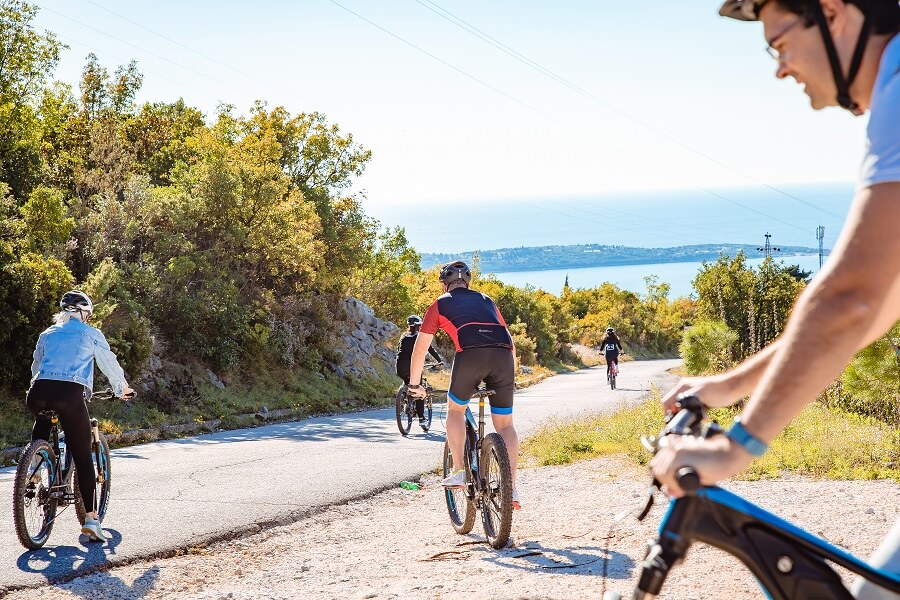
Bio sam na putu u Crnu Goru, gdje sam trebao odsjesti u Chedi Luštica Bay hotelu, gdje sam iz prve ruke otkrio kako trenutačno plove kroz nemirne vode hotelske industrije. Htjeli su mi pokazati kako se prilagođavaju značajnim izazovima nove stvarnosti. Vrijeme je spektakularno, obećali su mi, a vožnja quad bikeovima po poluotoku trebala mi je biti vrhunac ove godine. Dok sam gledao kroz prozor u još jedno kišno i sivo poslijepodne u Varaždinu, nije me trebalo mnogo nagovarati, pa smo isplanirali da odem na tri noći, letom do Dubrovnika.
Vjerni pratitelji TCN-a možda se sjećaju članka koji sam napisao nakon prve posjete Luštici, u veljači 2018. Tada sam bio šokiran da se takav projekt uopće može pokrenuti na Balkanu, nakon što sam godinama gledao kako velike investicije u Hrvatskoj zapinju na papirologiji, birokraciji i korupciji. A ovdje, samo preko granice, vizionarski investitori sa švicarskom adresom ulažu 1,1 milijardu eura da bi razvili vrhunsku nekretninu. Površina od 7 milijuna kvadratnih metara na poluotoku Luštica postaje mjesto gdje će nastati 7 luksuznih hotela, novo selo za 2.500 ljudi, dvije marine i golf teren s 18 rupa. Na projektu je sudjelovala i crnogorska vlada i napredovao je silnom brzinom. Ključno je bilo da je, s obzirom na veličinu terena o kojoj se radilo, investitor imao potpunu kontrolu nad dizajnom prostora. Ako je želio stvoriti iskustvo koje se temeljilo na miru, ljepoti, prirodi i životu bez stresa, nije bilo susjeda s kojima je trebao pregovarati.
I upravo se to dogodilo u zaljevu Luštica
To me je iskustvo dovelo do pisanja jednog od najdiskutiranijih članaka na TCN-u (razgovaralo se o njemu čak i na razinama ministara, kako u Hrvatskoj, tako i u Crnoj Gori) nakon te prve posjete Lessons from Montenegro: Why Luxury Lustica Bay Will Never Happen in Croatia.
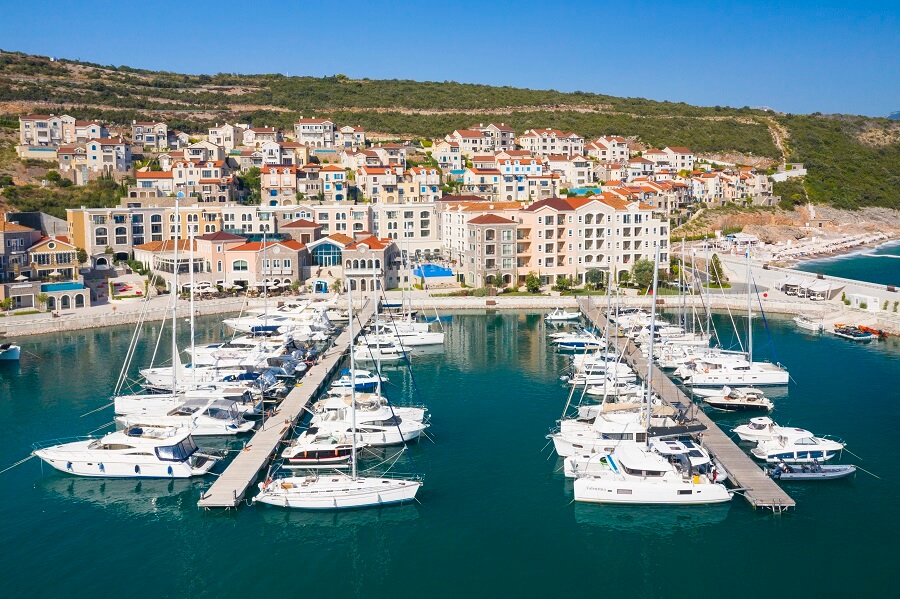
Tijekom moje prve posjete Luštici sada pred već gotovo tri godine, došao sam na gradilište, i sjećam se da sam se nasmijao kada su mi rekli da će luksuzni Chedi Luštica Bay biti otvoren u srpnju te godine, posebno kad sam se sjetio mojih iskustava sa sličnim projektima u Hrvatskoj. Ali zaista je bio otvoren u srpnju, a napredak koji se vidi od tada više je nego impresivan, unatoč kočnicama koje je sa sobom donijelo doba korone.
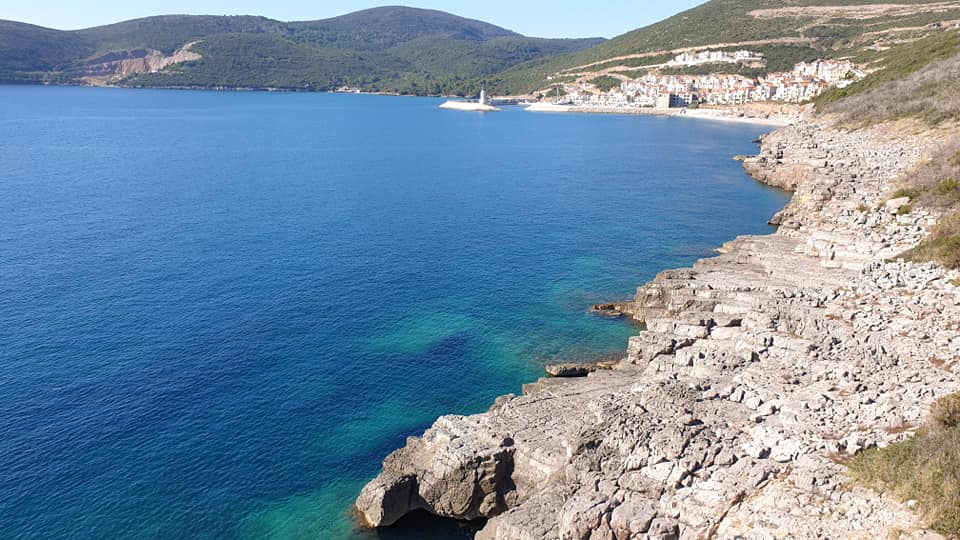
Da budem iskren, kada su mi se javili iz hotela začudio sam se što je Chedi Luštica Bay uopće otvoren sredinom studenog, posebno ove lude godine koja je uništila turizam diljem svijeta.
Jedan od izazova turizma kako u Hrvatskoj a tako i u Crnoj Gori je ovisnost o vremenskom dobu. Ovaj graf dubrovačkog aerodroma, preko kojeg u Lušticu dolazi najviše gostiju, daje sjajne naznake te ovisnosti o sezoni. A ovo je statistika za 2019., koja je bila normalna godina.
Razumljivo je da dolasci turista ovise o frekvenciji letova. Kada nema letova nema niti dolazaka s tradicionalnih turističkih tržišta. Samo pitajte Dubrovnik: dok je većina ostatka Hrvatske imala koristi od smanjenog broja letova, jer je većina gostiju iz susjednih država bila prisiljena odabrati destinaciju do koje može autom, Dubrovnik je ostao bez priljeva turista i u prvih šest mjeseci ove godine ostvario je samo 12% dolazaka iz 2019.
Situacija je bila još gora u Crnoj Gori. Kako još nisu član Europske unije, neka od njihovih najvažnijih tržišta praktično su nestala za ovu godinu kada je Crna Gora uklonjena s liste sigurnih zemalja Europske unije. Obavezna 14-dnevna samoizolacija pri povratku učinila je godišnji odmor u Crnoj Gori nezanimljivim za sve osim za najzagriženije ljubitelje. U 2019. godini, 49% turista u Crnu Goru došlo je iz Njemačke, Rusije i Velike Britanije – sva su ta tržišta ove godine praktično bila nepostojeća! Posjetitelji iz regije prošle su godine činili samo 9% turističkih dolazaka.
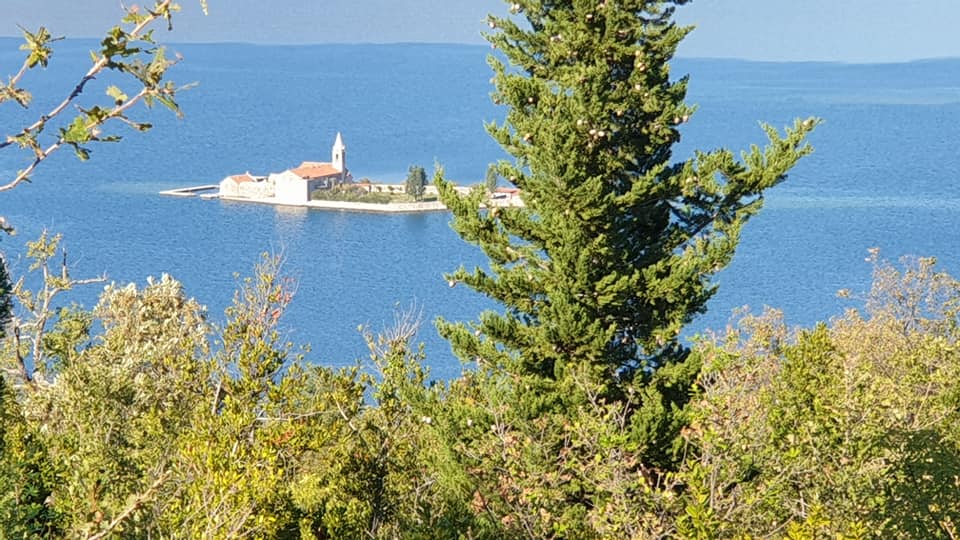
Ali gosti iz regije imaju jednu jednu veliku prednost za one koji se bave turizmom, a koji su ih željni potražiti: oni mogu doći autom. I dok prosječni turist iz regije vjerojatno nema onoliko sredstava za potrošiti kao što imaju Britanci, Nijemci ili Rusi, ipak postoji značajan broj bogatih ljudi u zemljama poput Srbije, Hrvatske, Bosne i Hercegovine, Kosova, Sjeverne Makedonije i Albanije. Oni su također možda planirali odletjeti nekamo izvan regije, a izostanak letova znači da su sad oni postali ciljano tržište. To posebno vrijedi u zimskim mjesecima, kada je lokalni turizam tradicionalno nepostojeći. Mnoge turističke tvrtke zimske mjesece na Jadranu provode zatvorene. To je doba godine kada se vlasnici odmaraju nakon duge i uspješne sezone, te i oni često odlete nekamo na produžen zasluženi odmor. Kako ni ove zime neće baš biti mnogo letova, postoji tržište za one koji imaju što ponuditi.
I rezultati su bili impresivni. Bilo je jasno da će turističke brojke za ovu godinu biti smanjene, ali posjetitelji iz regije ove su godine premašili 80% svih dolazaka (u odnosu na 9% lani), a prognoza za 2021, kako se stvari budu vraćale u normalu, je da će tada činiti 60%.
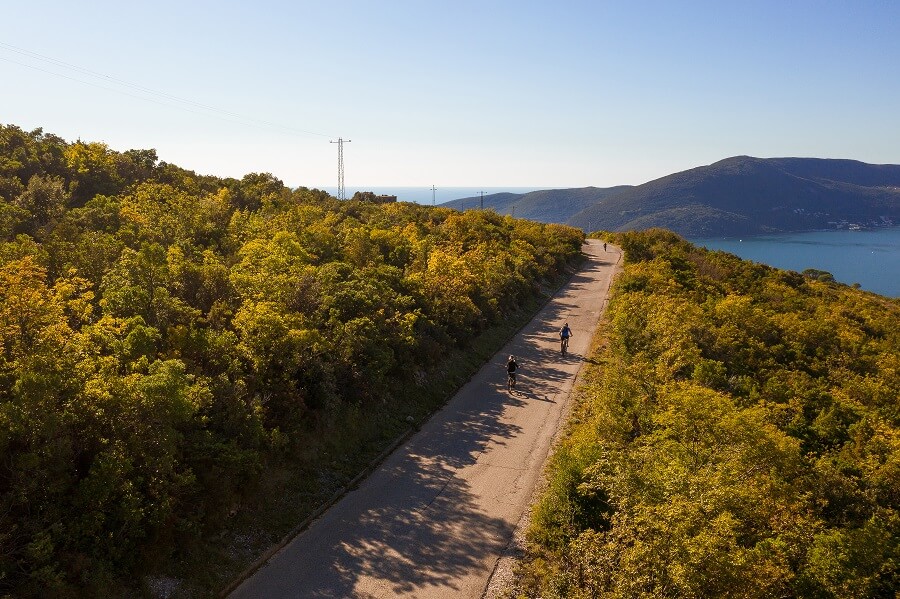
A kako sam otkrio pri svojoj posljednjoj posjeti Chedi Luštica Bayu, nude mnoštvo toga, dok se u pozadini nalazi netaknuta priroda, svjež zrak, prostor i privatnost. Luksuz, kako bi to nazvao moj prijatelj s početka članka.
Pa što to Chedi radi drukčije, da može biti otvoren cijelu godinu, dok mnogi hoteli u Dubrovniku 2020. uopće nisu otvorili svoja vrata?
Dva su ključa za njihov relativni uspjeh: fantastično avanturističko igralište koje nema susjeda, te management team koji se ne boji istraživati novosti i širiti poslovanje.
Često se govori o tome kako je obala Crne Gore preizgrađena i njena ljepota time kompromitirana. I dok je to nedvojbeno istina u nekim mjestima (naprimjer, u Budvi i u Herceg Novom), ništa ne može biti dalje od istine na poluotoku Luštica. On je zaista mjehurić pozitivne energije i neukaljane ljepote na svim stranama, posve drukčiji od svega drugog što sam susreo na crnogorskoj obali. A na obilasku na quad vozilima sam otkrio i da je mjesto pritajeno bogate (i iznimno zdrave) turističke ponude.
Kada sam prvi put posjetio Chedi Lustica Bay, početkom 2018., još je bila u izgradnji. Moj dojam je bio da se radi o izvrsnom projektu, ali da je malo daleko od ostatka turističke akcije
Tek sam sada počeo u potpunosti cijeniti magiju doživljaja zaljeva Luštica, sada kada je više toga izgrađeno i kada stvari počinju sjedati na svoje mjesto. Ne radi se samo o hotelu, tih 7 milijuna kvadrata pružaju cjelokupno iskustvo Luštice, koje je moguće među najboljim takvim luksuznim iskustvima prostora, prirode, ljepote i svježeg zraka u Europi danas.
Koristeći hotel kao bazu, možete iskoristiti prilike koje oduzimaju dah za bicikliranje po cestama na kojima nećete sresti nikoga.
Ili za jogu uz vodu, opuštajući način da započnete dan.
Gary Player teren za golf s 18 rupa još nije otvoren, ali je driving range uređen i otvoren i vrlo popularan u većem dijelu godine (zatvara se 15. studenog).
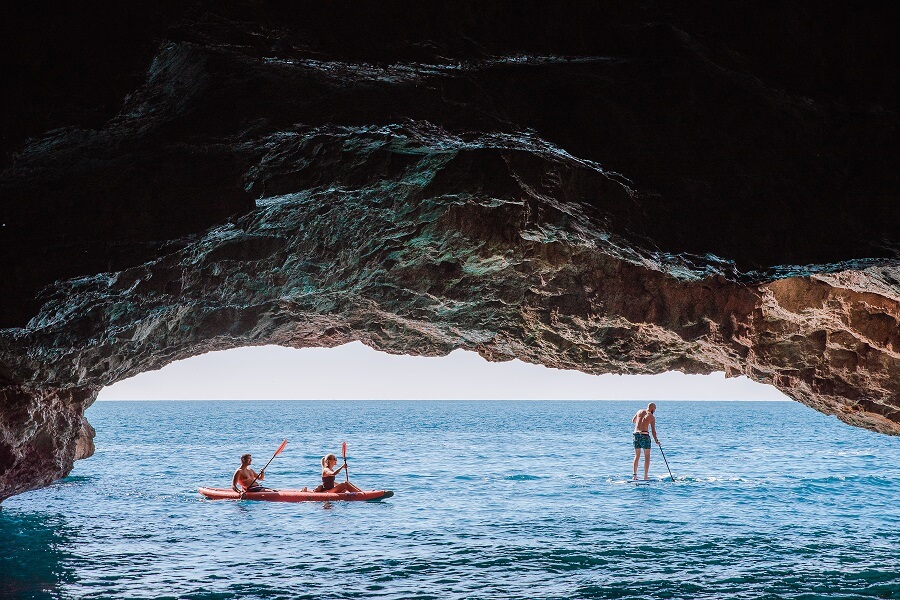
Na plaži je bilo ponešto ljudi, neki su se čak i kupali usred studenog, a kajaci i SUP-ovi su bili raspoloživi za uporabu.
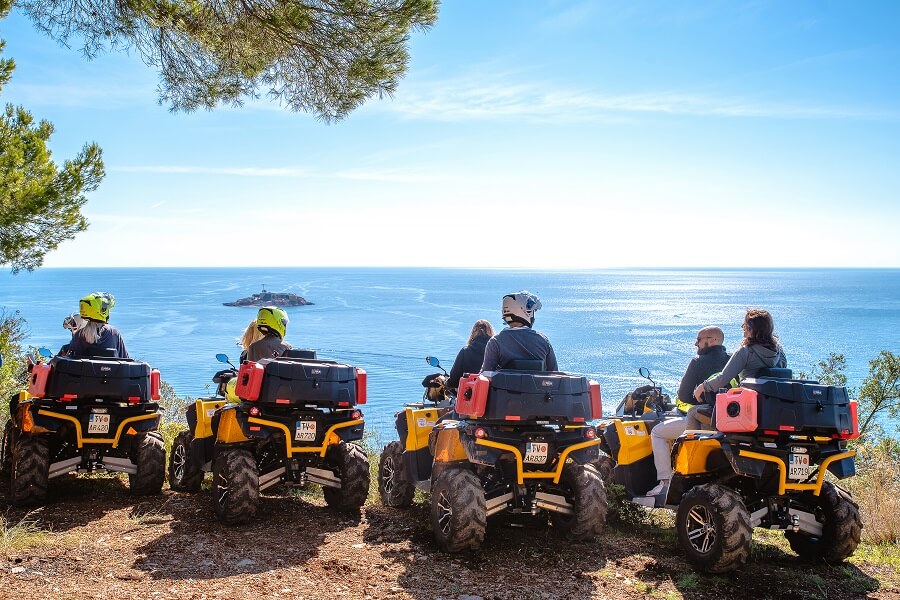
Očekuje vas cijela flota quadova i e-bicikala, koje možete unajmiti s ili bez vodiča. Vodič uz quad se svakako isplati.
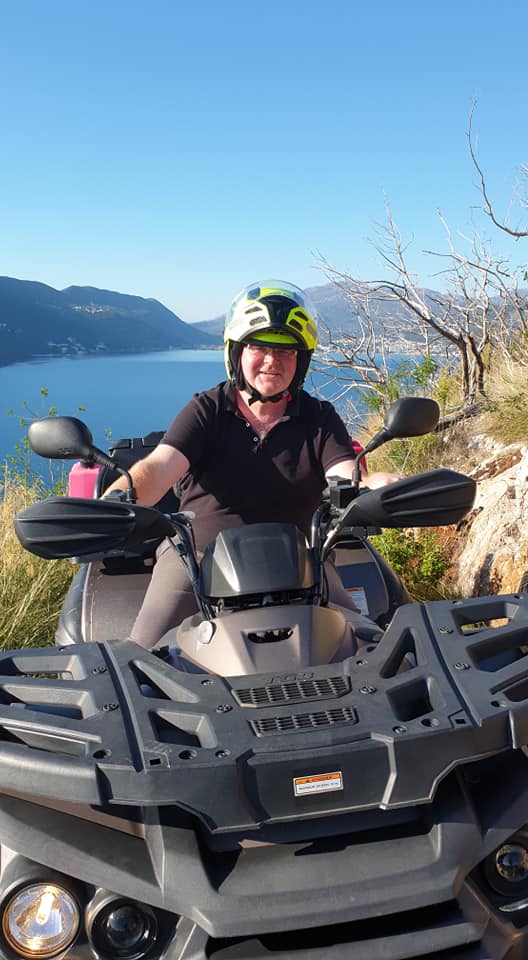
Moram priznati da sam bio malo nervozan oko te vožnje na quadu, jer mi je to bilo prvi put, ali su me sjajni (iako pomalo ludi) vodiči iz Chedija uvjerili da će to biti obilazak za pamćenje.
Nisu bili u krivu.
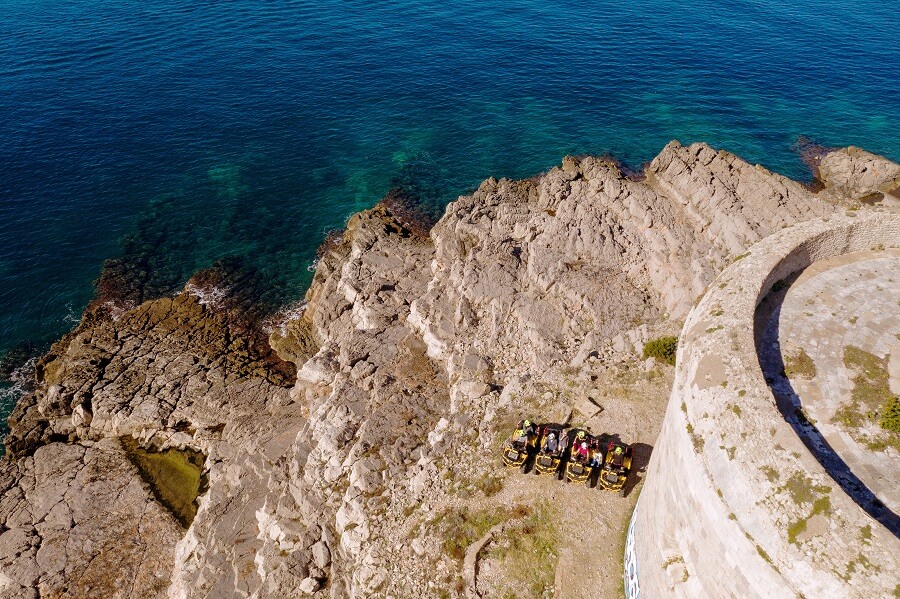
Kakav sjajan način za istražiti poluotok, brzinom i razinom interesa kojom želite!
Bilo koja ideja kako bi ovo mogla biti nježna vožnja po glavnim putevima brzo se raspršila čim smo sišli offroad, a stajali smo samo da bismo s puta micali prepreke (pogledajte video gore).
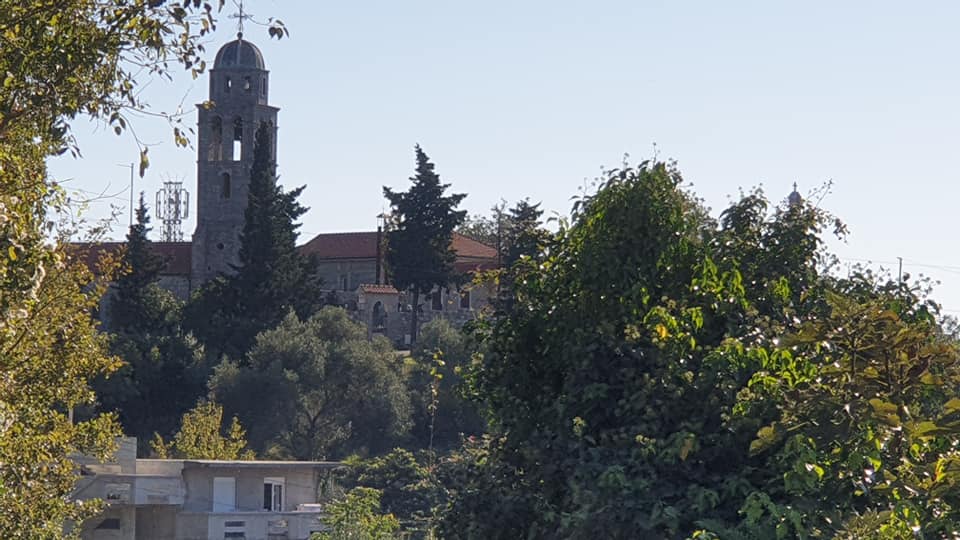
Bilo je vremena i za diviti se mnogim prelijepim crkvama koje se nalaze u selima Luštice.
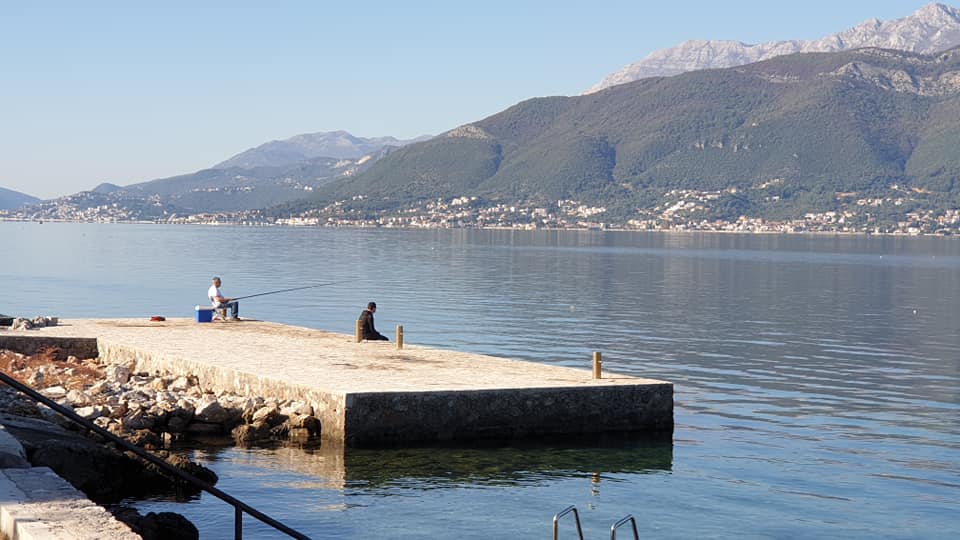
Prilika za uočiti opušteni lokalni način života – Crna Gora u jesen, na prekrasno kasno jutro u studenom.
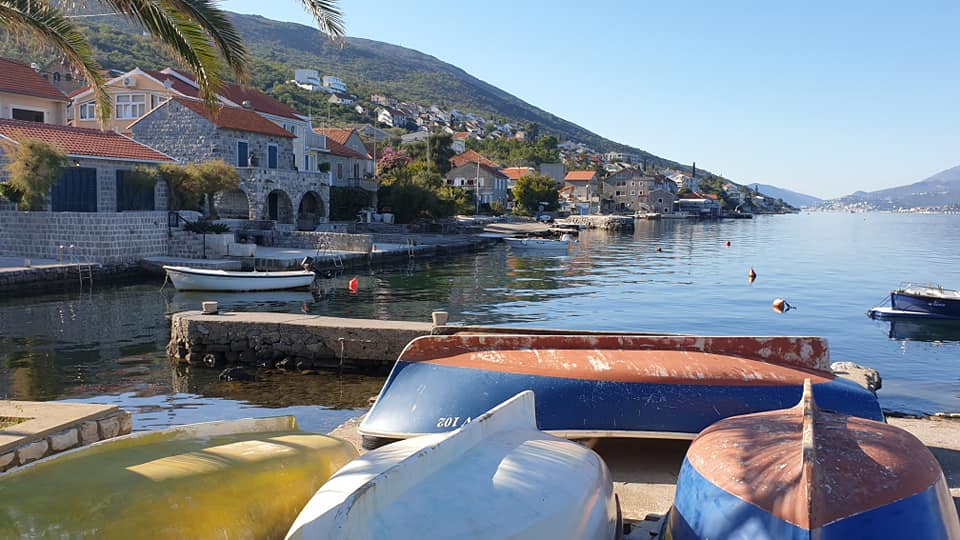
Vožnja kroz tradicionalna sela na obali, oazu mirnoće.
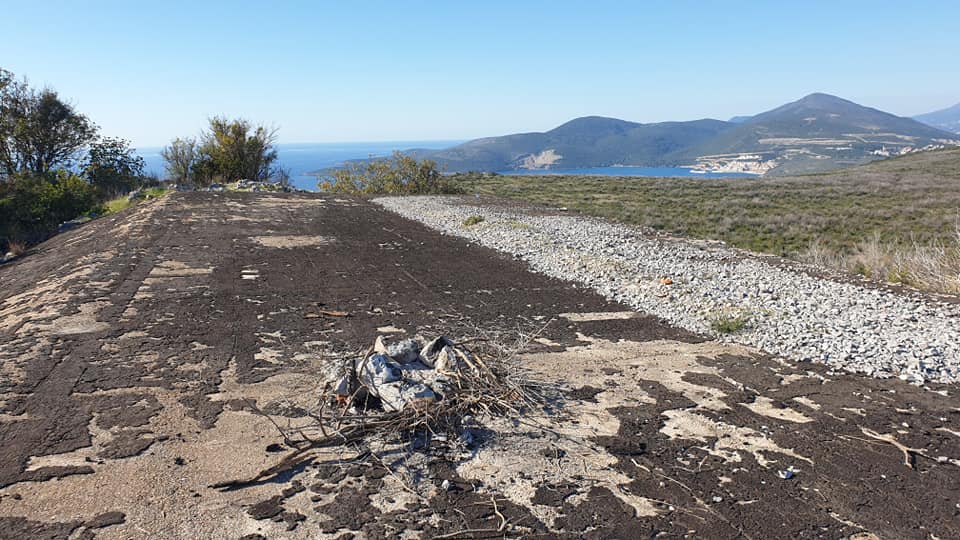
Naš vodič Milan domaći je iz Luštice, strastven zaljubljen u svoj poluotok. Odveo nas je na neka od svojih omiljenih mjesta, gdje ide na planinarenje s prijateljima, daleko od gužve, gdje uživaju u roštiljanju u prirodi, kao što je ovo mjesto uz jednu od 85 utvrda bokeljske regije, koje su izgrađene za vrijeme Austro-Ugarske.
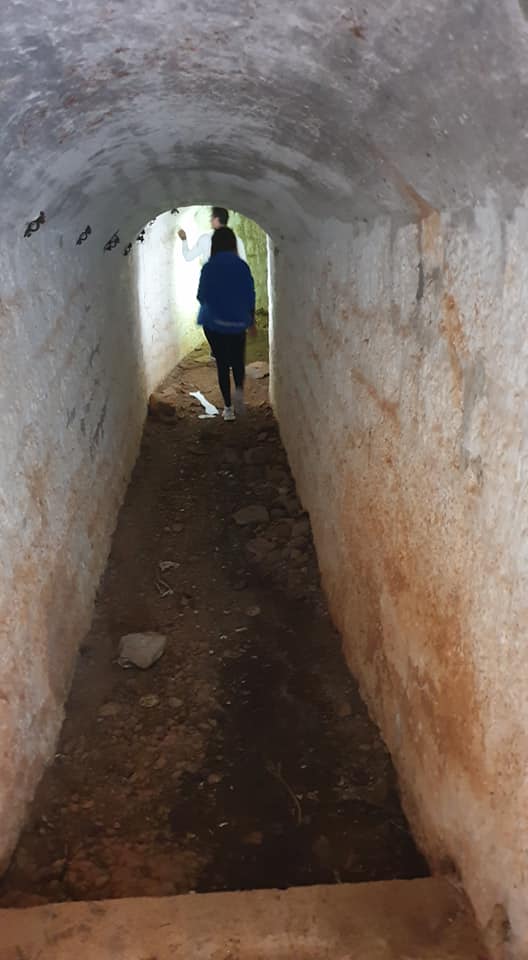
Utvrde imaju i svoje tajne, pa nas je Milan proveo kroz 400 metara dugačak tunel ispod utvrde na Grabovcu.
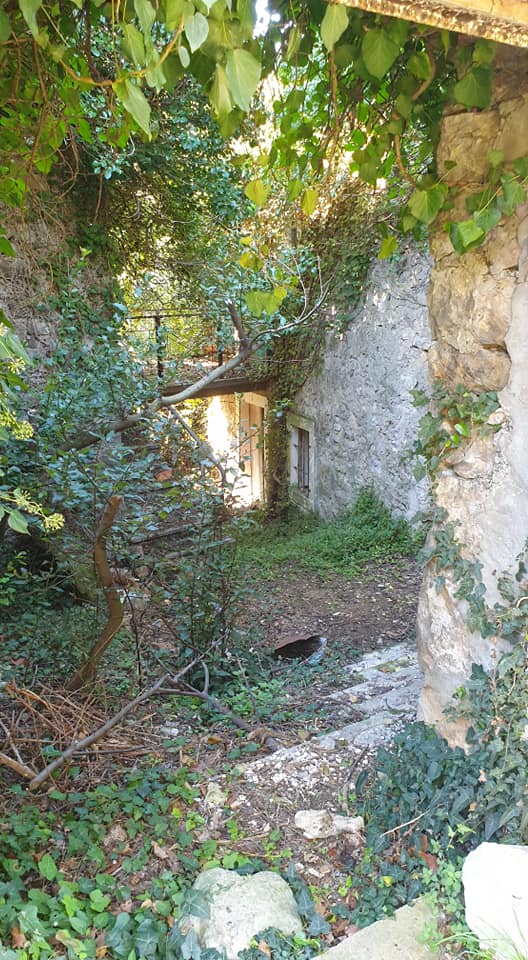
Kako je osjetio da nam se zaista svidio ovaj obilazak, Milan nas je odveo još dublje u svoj svijet, pokazujući nam simpatična kamena sela, u kojima su nažalost mnoge kuće u jako lošem stanju.
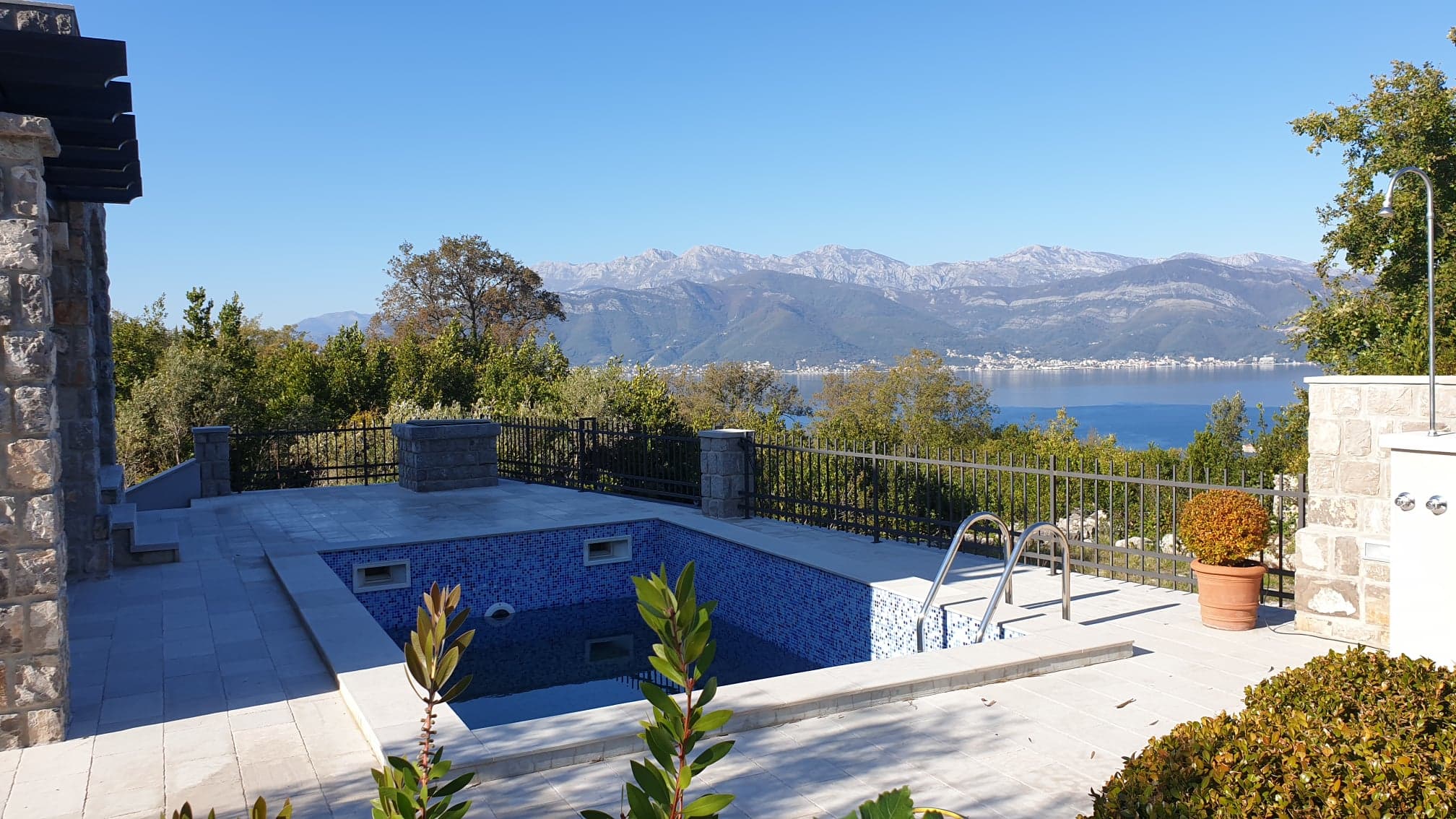
A druge su prekrasno uređene i nude fantastičan pogled, okružene prirodom i bez drugih ljudi u blizini.
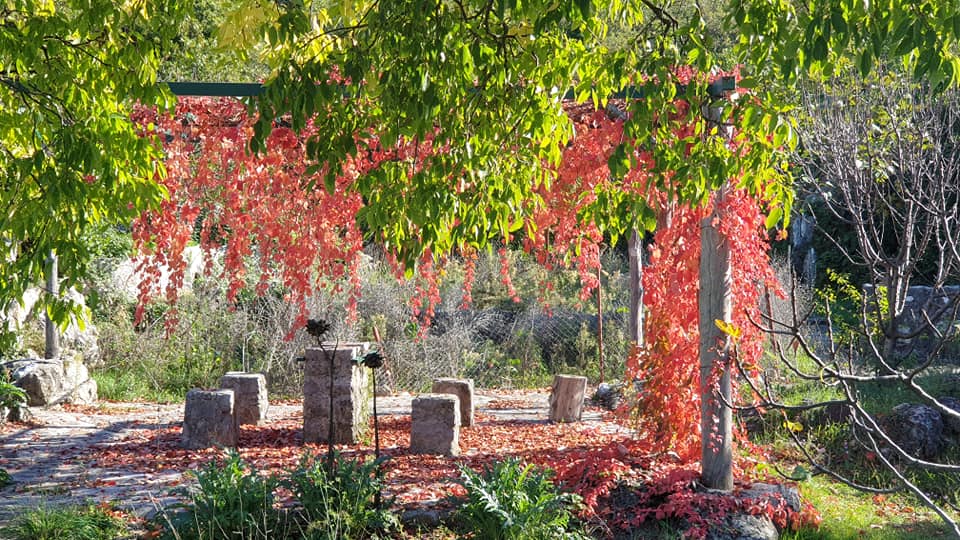
Boje Luštice u jesen.
Divlja ljepota i staro normalno. Nakon što sam mjesecima bio u stresu i pisao o pandemiji, učinilo mi se da sam pronašao mjehurić prirodne svježine koji je podsjećao na život kakav je nekad bio.
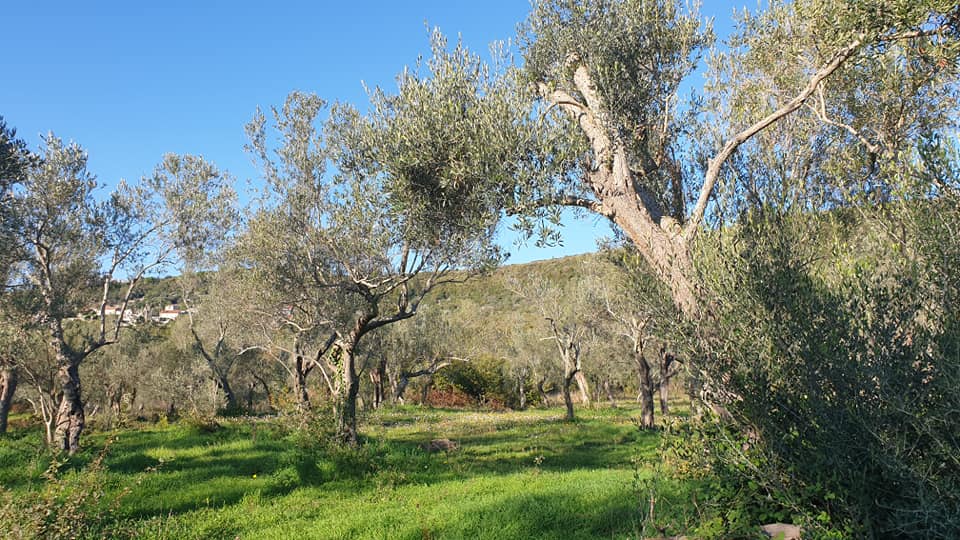
Nastavili smo voziti kroz polja i uz maslinike iz kojih nastaje fantastično crnogorsko maslinovo ulje. Ako imate vremena i želje, postoji mogućnost da uživate i u kušanju maslinovih ulja obitelji Morić u njihovom masliniku, kao i senzacionalnih lokalnih sireva koje proizvodi Ruskinja koja se prije 9 godina doselila na poluotok.
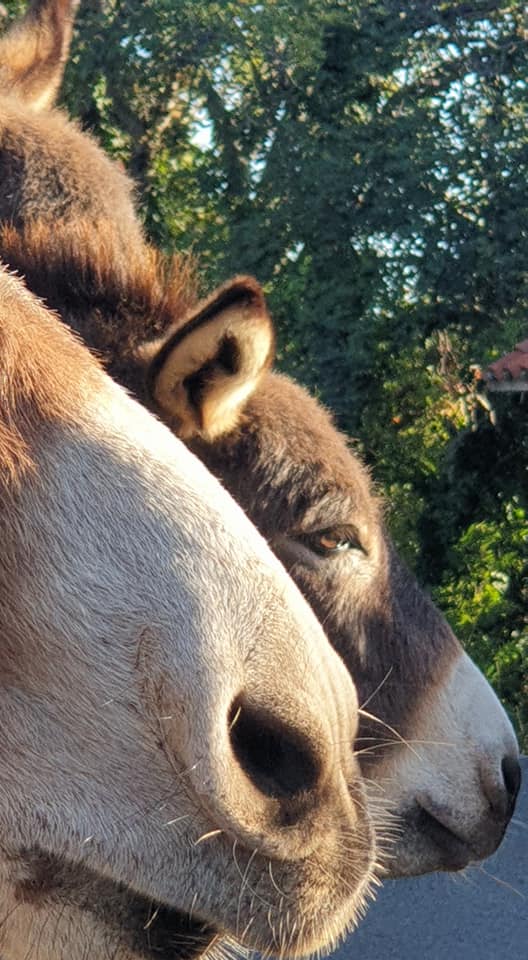
Možete malo i hraniti magarce.
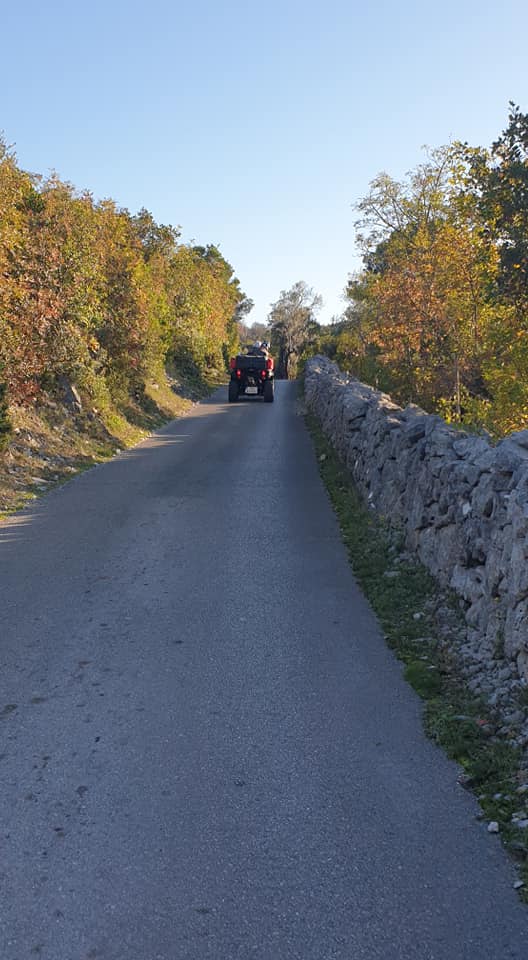
A svugdje kameni zidovi slijede ceste.

Austro-Ugarski utjecaj je snažan u regiji Boke, i ne samo zbog mnoštva utvrda. Kako su bili majstori infrastrukture, čini se da su bili daleko ispred svoga vremena pa da su oni čak postavili i temelje za puteve za današnja quad vozila, prije više od stoljeća. No, sad smo išli potpuno off-road.
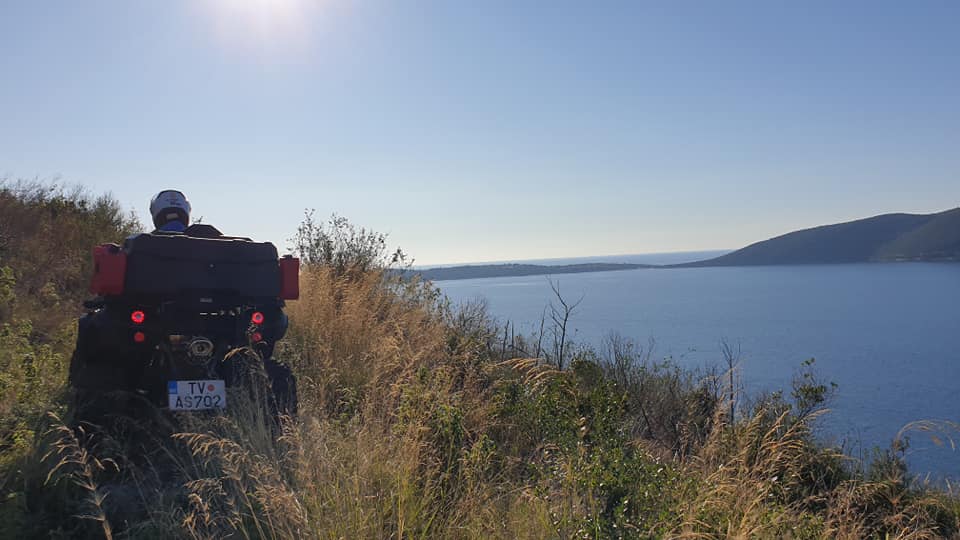
Ali, ako ste pomislili da je to najgore što ćemo ići off-road, Milan je imao drukčije planove. On zna za neka mjesta iznimne ljepote na poluotoku na koja čak niti Austrijanci nisu nikada naišli. Do njih nije vodio nikakav put, pa sam samo slijedio quad ispred sebe. Pogled je bio izniman, kao i vrijeme (21° C sredinom studenog).
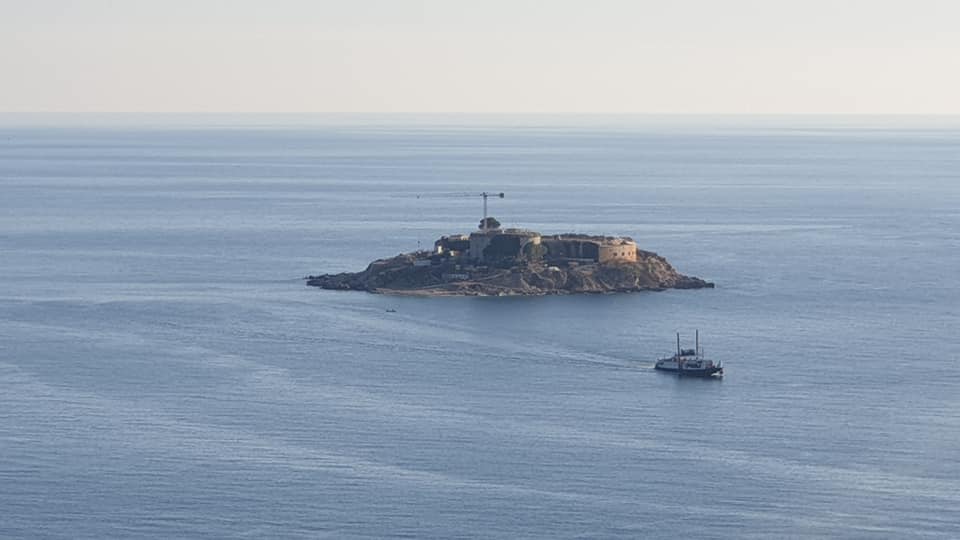
Pogleda na utvrdu Mamula, koja bi sljedeće godine trebala biti otvorena kao hotel s 5 zvjezdica.
Obilazak koji nikada neću zaboraviti.
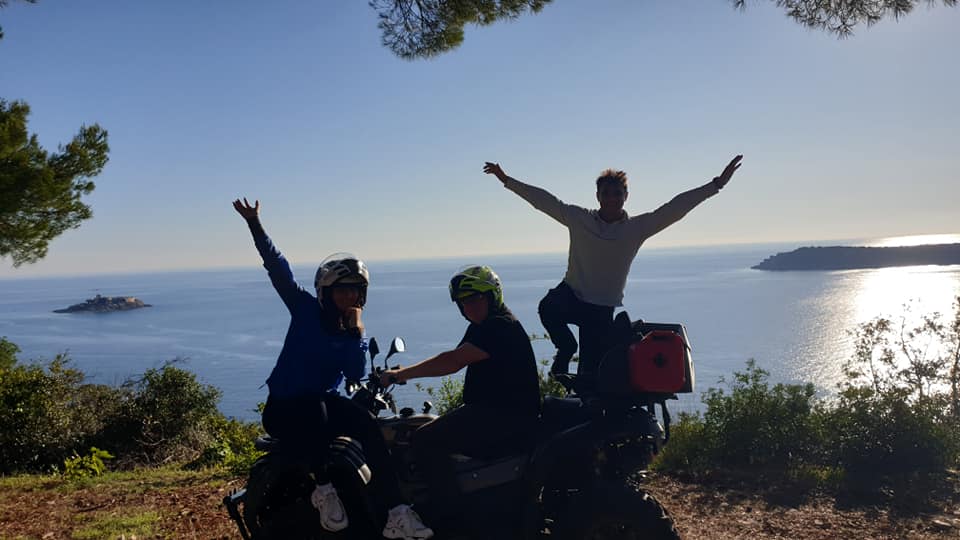
Ogromna zahvala ludom Milanu i Tamari za njihov dio u najboljem turističkom iskustvu ove godine za mene. Zaista preporučam.
Kada je obilazak završio, došlo je vrijeme da se vratimo u hotel Chedi Luštica Bay, isprobati njihovu vansezonsku ponudu.
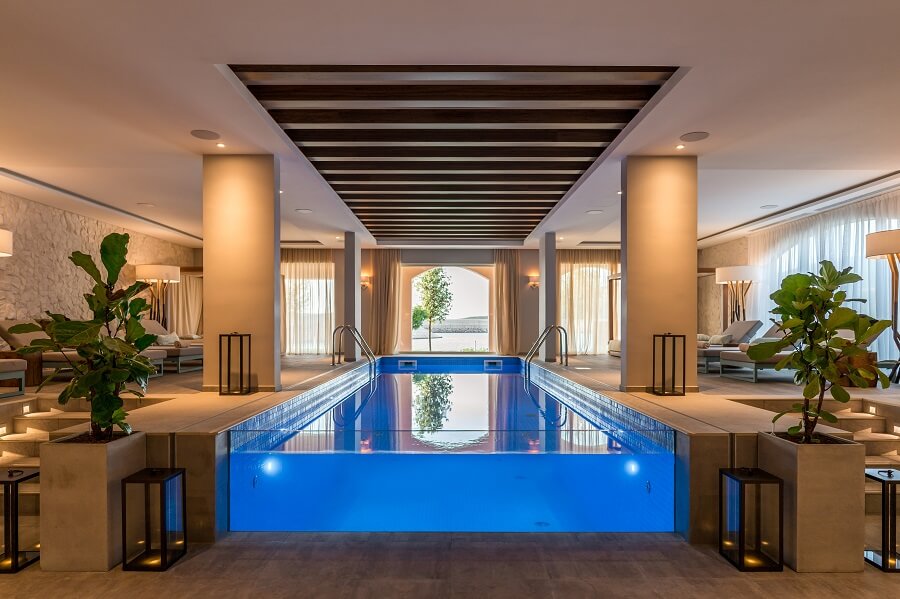
I dok su se neki gosti kupali u vanjskom bazenu, u unutrašnjem nije bilo nikoga.

Dok sam boravio u Luštici, objavljeni su dobitnici 2020 World Luxury Hotel Awards i među njima je bilo dobrih vijesti za Chedi Luštica Bay, koji je proglašen najboljim luksuznim obalnim hotelom u Europi, najboljim luksuznim boutique restoranom u Europi i najboljom ekipom Spa u Crnoj Gori. Impresivan broj nagrada, pa sam morao malo istražiti. Palac gore za tajlandski curry od kozica i kokosa, egzotični djelić menija koji se inače koncentrira na lokalne organske proizvode.

... od tajlandskog curryja do tajlandske masaže. Opuštajući način da se oporavim od avantura na quadu.

Jedan od izazova za team iz Chedija leži u privlačenju domaćeg tržišta. Kada je otvoren Porto Montenegro u Tivatu prije više od deset godina, bilo je očekivano da će biti doživljen kao mjesto za bogate strance, nedostupan domaćima. Ta se percepcija sada promijenila, te je taj projekt postao popularan među domaćima, ali sam imao dojam da Chedi i njegovo selo oko marine domaći i dalje doživljavaju tako.
No, i ta se percepcija polako mijenja kako marina otvara sve više dućana, kafića i restorana, pa je sve više domaćih stanovnika tamo otišlo na kavu i prepričalo doživljaje. Promjena je percepcije također i posljedica novog pristupa managementa hotela, čija je strategija povećati broj aktivnosti koje nude. Ne samo biciklizam, kajaci i quad vozila, nego također unutar i oko samog hotela, a na kojima će domaće stanovništvo biti više nego dobrodošlo.
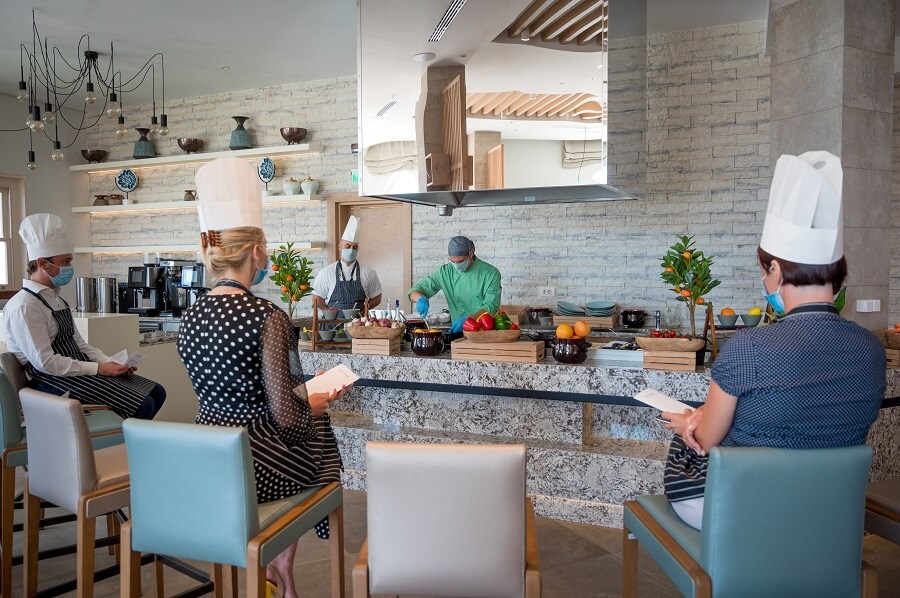
Tečajevi kuhanja za odrasle četvrtkom
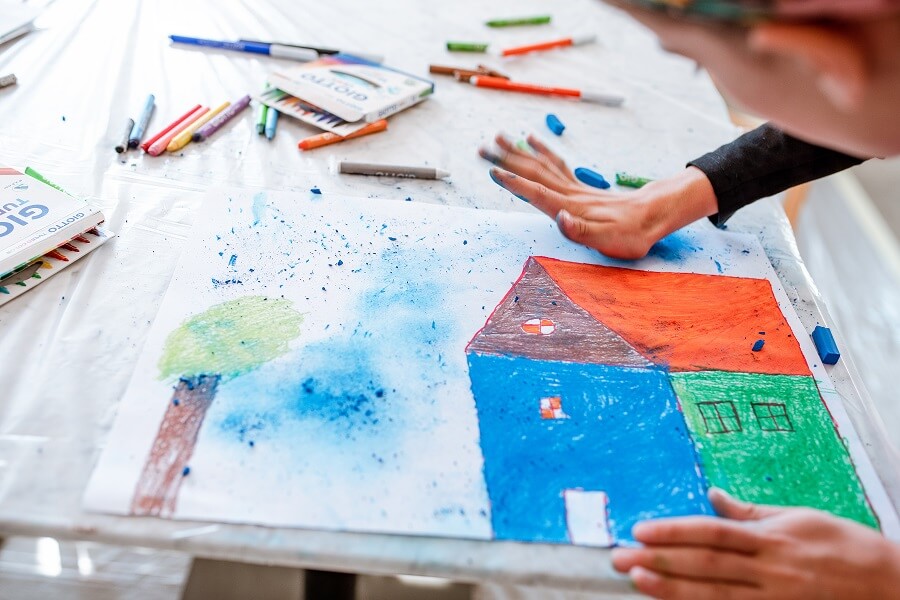
Tečajevi izrade kolačića i umjetnosti za djecu vikendom.

Besplatne filmske večeri, uključujući i besplatne kokice, srijedom. Ponekad se to odvija u amfiteatru u marini, koji je zaista spektakularno mjesto za gledanje filma.

A ponekad u predvorju hotela, gdje gosti mogu uživati u njegovom komforu i velikom ekranu.
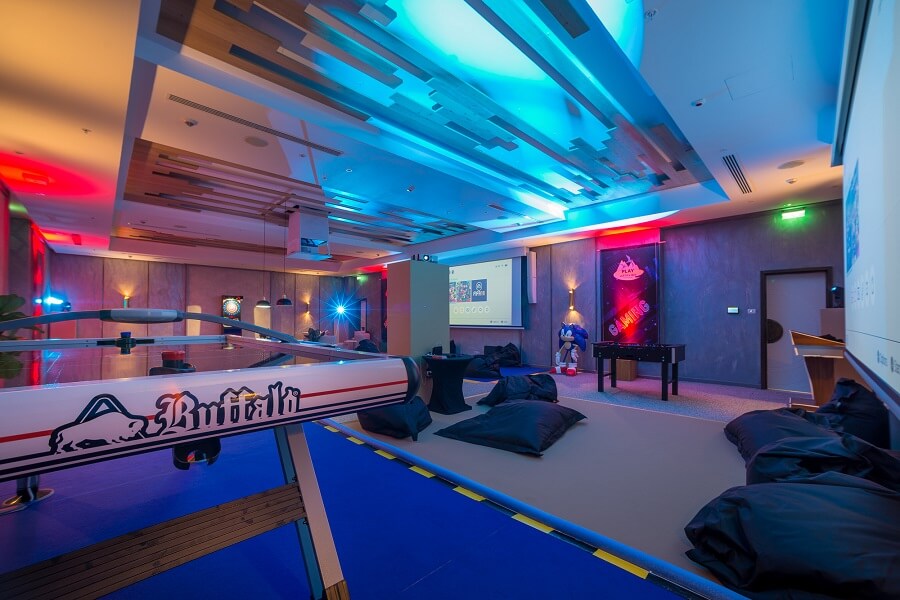
A zabava za djecu ne ovisi o vremenu, pa preinačena konferencijska sala nikad nije izgledala zabavnije niti bila popularnija.
Kratki video-obilazak
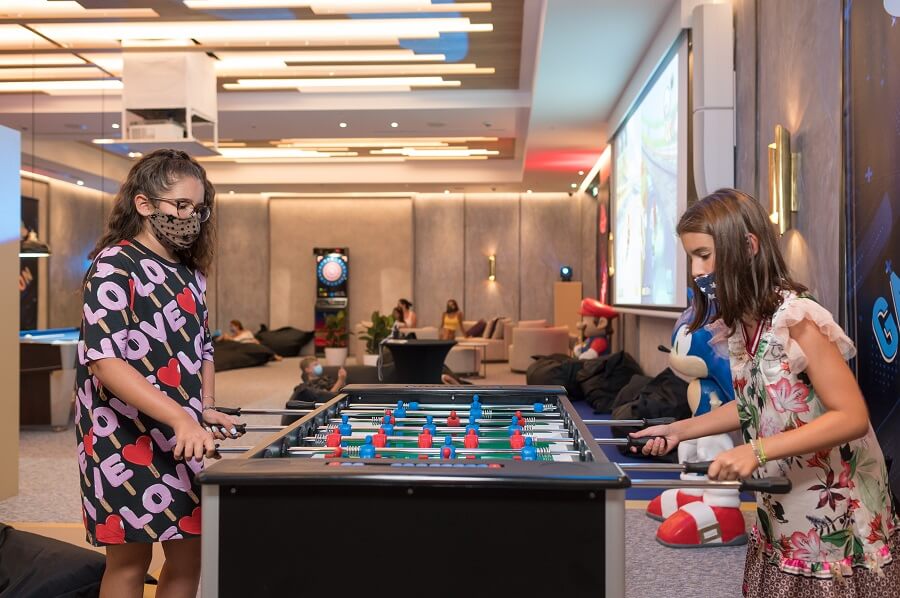
Svi ovi dodatni sadržaju su besplatni za hotelske goste, ali i – a to je lijepa gesta – besplatni i za domaće posjetitelje i svakoga tko dođe u hotel i tamo išta potroši. Nije loše investirati, da biste se opustili u ovoj oazi uz more, dok vam se maleni zabavljaju i igraju istražujući.

I posjetitelji iz regije im pristižu. Da su stvari normalne, možda bi ove zime razmišljali o plaži u Tajlandu ili Šri Lanci, ali kako im te opcije nisu baš dostupne ove godine, ispunjujuća obiteljska zabava s nešto prirodnog luksuza pokazuje se kao ugodna, iako neočekivana alternativa. Jedna sjajna inovacija koja mi se zaista svidjela je „resort credit“ – ako uzmete sobu ili više njih s pogledom na more u ovoj destinaciji aktivnog stila života za 199 eura ili više, cjelokupnu ćete cijenu sobe moći iskoristiti u cijelom resortu, te čak dobiti i neka noćenja besplatno. Malo uživanja na quadovima, kajaci, masaža, filmske večeri i dobra hrana, a smještaj dobijete besplatno.
I ovaj novi fokus na aktivnosti čini se da djeluje, jer hotel predviđa da će imati daleko veći prihod od aktivnosti u sljedećoj godini. Zanimljivo je bilo da je tijekom mog boravka jedna četvrtina gostiju uplatila neke od dodatnih aktivnosti. Zaista, čini se da je ovaj promjena smjera prema stilu života, outdoor aktivnostima i regionalnom tržištu je vjerojatno najbolji turistički odgovor koji sam vidio na Jadranu tijekom ove bremenite godine.
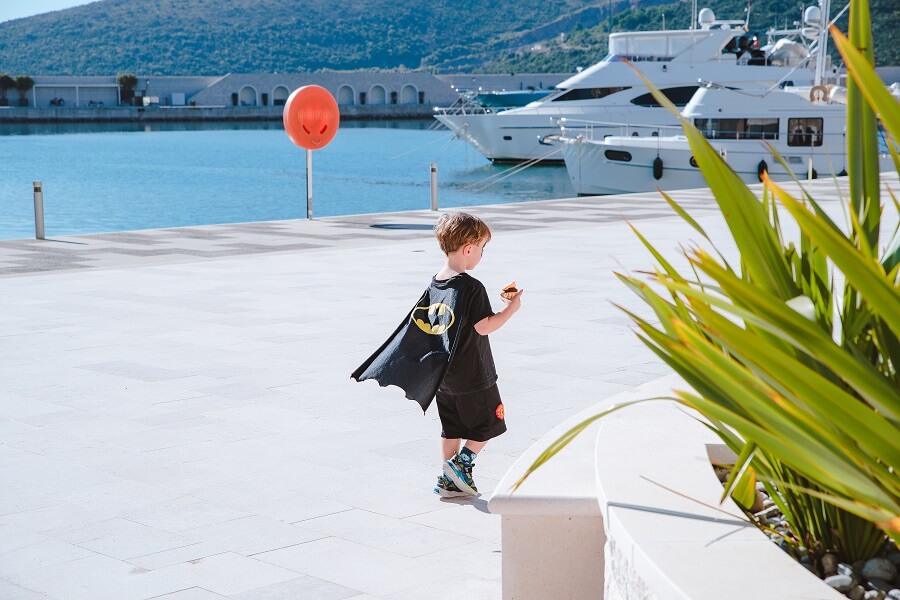
Bila je ovo stresna godina za sve nas, i nisam bio siguran što će me čekati u Crnoj Gori ovaj put. Ali, ono što sam dobro zapamtio i 48 sati kasnije jest luksuz. Ne udobni kreveti, ne fantastični pogledi, ne ukusna hrana, ne pamtljive aktivnosti. Nego luksuz koji je spomenuo moj prijatelj s početka – priroda, prostor, svjež zrak, privatnost. Dojam je bio kao da smo i dalje u staroj normalnosti, kada smo te neke stvari uzimali zdravo za gotovo. Zaljev Luštica je mjehurić, nema dvojbe, a energija ljudi koji tamo žive i rade jednostavno je zarazna.
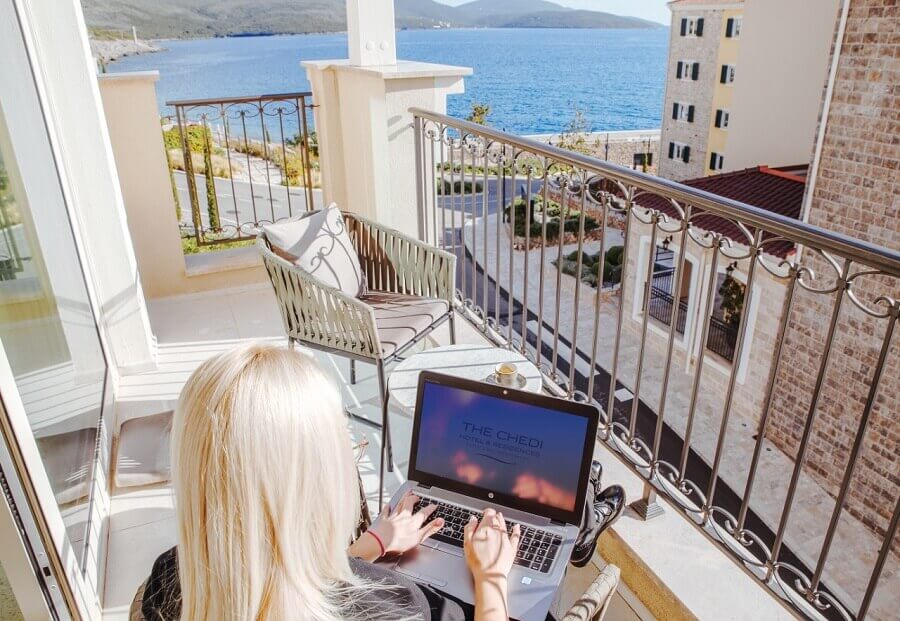
Jedna od najzanimljivijih prilagodbi novom dobu je odluka da se neke hotelske sobe pretvori u uredske prostore. Ovi su novi uredi dostupni po all-inclusive cijeni od 790 eura mjesečno, uz neograničeni parking i brzi Internet. Pristup svim uslugama i aktivnostima hotela, kao i inspirirajući pogled kao što je onaj iz ureda koji vidite gore, još je jedan inovativni iskorak koji se već isplaćuje: prvi digitalni nomad već je iskoristio ovu ponudu u inicijalnom tromjesečnom periodu.
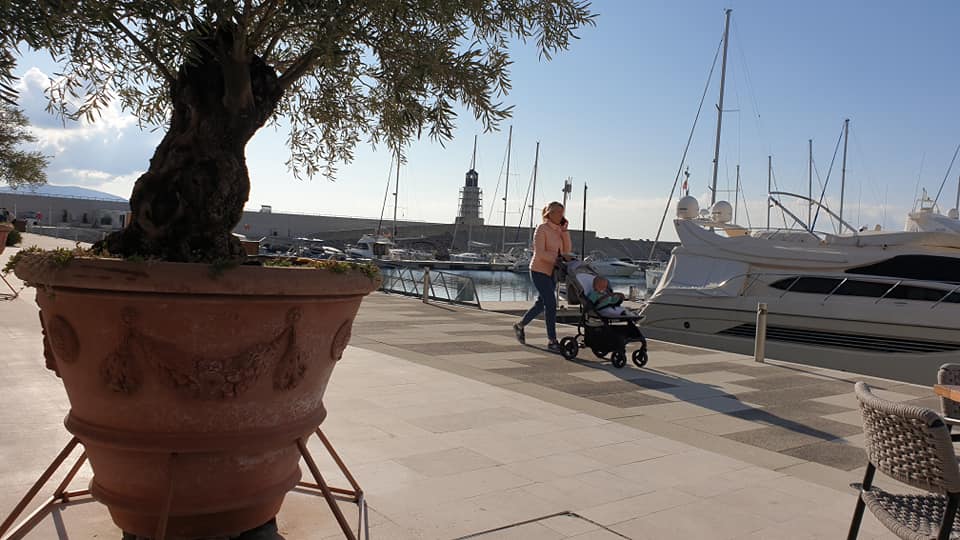
Staro normalno na kraju 2020. Da, to zaista postoji. Nije da se epidemiološke mjere ne provode. Provode se, i čini se da ih se ljudi pridržavaju bolje nego sam navikao vidjeti u Hrvatskoj. Možda je jedan od razloga zašto sam stekao takav dojam i taj što nisam vidio mnogo ljudi – možda ukupno njih 10 tijekom 4 sati obilaska na quadu, naprimjer.
Jedan običan ručak u marini Luštica sredinom studenog.
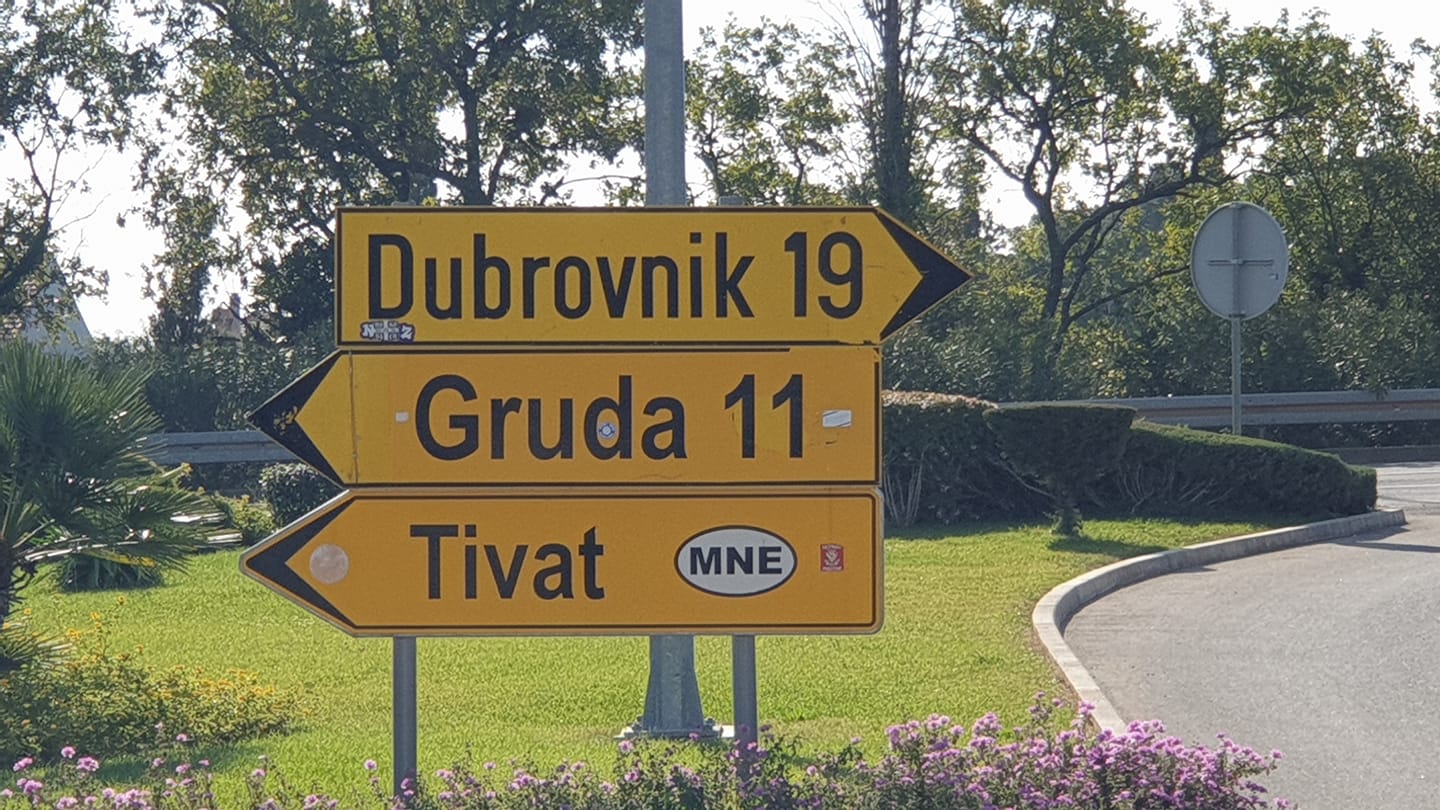
U vožnji natrag do dubrovačkog aerodroma, za oko mi je zapeo prometni znak na mjestu gdje se napušta aerodrom. Dubrovnik je desno, na 19 km, Gruda lijevo, 11 km. A ispod toga, neko mjesto koje se zove Tivat u Crnoj Gori. Nasmijao sam se.
Tijekom prijevoza od hotela moj mi je prijateljski nastrojen vozač rodom iz Tivta pričao o životu u Tivtu prije dolaska luksuznog turizma, prvo kroz Porto Montenegro a sada i kroz Luštica Bay.
"Prije 15 godina, Tivat je bio toliko nebitan da ga nisu spominjali ni na vremenskoj progonozi na nacionalnoj razini. A vidite ga sad."
Svakako. Tada bi i sama ideja da bi netko otišao iz Dubrovnika u Tivat za vikend odmor bila ismijana. Danas se to vrlo često događa. A sada ako pristanete putovati još 10 minuta, možete istražiti divlju ljepotu i staro normalno. U luksuzu. Luksuzu koji uključuje prirodu, prostor, ljepotu i beskonačno mnogo svježeg zraka.
Srdačno vam to preporučam.
Dugujem mnogo zahvala timu Chedi Luštica Baya što su mi omogućili posjetu i sa mnom podijelili svoja razmišljanja. Saznajte više o čaroliji u zaljevu Luštica na službenoj web stranici..
(Paul Bradbury bio je gost u The Chedi Lustica Bay tijekom studenog 2020)
Lessons from Montenegro: Wild Beauty & The 'Old Normal' at The Chedi Lustica Bay
November 13, 2020 - What to do when the planes stop flying and traditional tourism markets dry up? An innovative shift in focus at the Chedi Lustica Bay, and some lessons from Montenegro in how to reinvent tourism.
"Luxury means different things to different people," a friend said to me recently "For me at the moment, luxury means nature, space, fresh air and outdoor activities."
Things we used to take for granted, I thought to myself later - particularly those who were forced to endure weeks of urban lockdown earlier this year (and in some cases, once more this winter). COVID-19 seemingly has no preferences of victim based on importance, reaching the highest officials in 10 Downing Street and The White House, to name but two. Nature, fresh air, space, privacy - a chance to breathe and return to the old normal. That really is luxury, I agreed, before putting on my mask once more as I entered Zagreb Airport.

I was on my way to Montenegro, staying at The Chedi Lustica Bay where I discovered first hand how they are currently navigating the hotel industry’s troubled waters. The hotel wanted to show me how they were adapting to the considerable challenges of the new reality. The weather was spectacular, they promised, and a quad bike tour of the peninsula would be a highlight of the year. Looking out of the window at one more drizzly grey afternoon in Varazdin, I didn't take much convincing, and we made plans for a 3-night stay, with me flying down to Dubrovnik.
Longterm readers of TCN may recall an article I wrote soon after my first visit to Lustica, back in February, 2018. Back then I was stunned that such a project could actually be getting off the ground in the Balkans when I had spent years watching major foreign investments in Croatia get strangled by paperwork, bureaucracy and corruption. And yet here, across the border, a visionary Swiss-based business was investing 1.1 billion euro to develop a prime piece of real estate. The 7 million m2 plot on the Lustica peninsula would be home to no less than 7 luxury hotels, a new village of 2,500 people, two marinas and an 18-hole golf course. The project, done in partnership with the Montenegrin government, was moving forward at speed. Crucially, with such a large amount of land, the investor was in total control of the design of the space. If he wanted to build an experience that focused on peace, beauty, nature and stress-free living, he had no neighbours he needed to negotiate with.
And that is exactly what is happening at Lustica Bay.
It was an experience which led me to write one of my most discussed articles ever on TCN (even at ministerial level in both Croatia and Montenegro) after that first visit - Lessons from Montenegro: Why Luxury Lustica Bay Will Never Happen in Croatia.

During my first visit to Lustica almost three years ago now, I encountered what was essentially a building site, and I remember laughing when I was told that the luxury The Chedi Lustica Bay would open in July that year, especially when reverting back to my experience of such projects in Croatia. But open in July it duly did, and progress since then has been more than impressive, despite the slowing brakes of the corona era.

To be honest, when the hotel contacted me, I was surprised that the Chedi Lustica Bay was even open in mid-November, especially in this crazy year which has ravaged tourism all over the world.
One of the challenges of tourism in both Croatia and Montenegro is seasonality. This chart of Lustica's most important feeder airport - Dubrovnik - gives a great indication of the seasonality of its tourism. And these statistics are from 2019, which was a normal year.
Understandably, the tourist arrivals mirror the frequency of flights. Take away the flights, and you take away many of the traditional tourism markets. Just ask Dubrovnik. While most of the rest of Croatia benefited from the lack of flights because neighbouring countries were forced to choose drivable destinations due to no flights, Dubrovnik was starved of tourist supply and registered just 12% of 2019 arrivals for the first 6 months of this year.
The situation was even worse for Montenegro. Not yet an EU member, some of its main markets were effectively killed for the year when Montenegro was removed from the EU list of safe countries. The 14-day self-isolation requirement on return made a holiday to Montenegro unattractive to all but the diehard fan. In 2019, 49% of tourists to Montenegro came from Germany, Russia and the UK alone, all markets which were effectively cut off for this year. Regional visitors made up just 9% of tourist arrivals last year.

But regional tourists had one big advantage for those tourism businesses willing to seek them out - they could arrive by car. And while the average tourist from regional countries may not have as much disposable income as the Brits, Germans and Russians, there are a significant number of wealthy people in countries such as Serbia, Croatia, Bosnia and Hercegovina, Kosovo, North Macedonia and Albania. They, too, were perhaps planning to fly outside the region, and the lack of flights meant that they were a new target market. This is especially true in the winter months, when tourism locally is traditionally dead. Many tourist businesses close for the winter months on the Adriatic. It is the time of year when the owners relax after a long and successful season, and they fly off somewhere for an extended and well-earned holiday. With no flights this winter, the market is there for those with something to offer.
And the results were impressive. With tourism numbers necessarily much reduced, this year's regional visitors topped more than 80% of all arrivals (up from just 9% next year), with the 2021 forecast as things return towards normality projected at 60% for the hotel.

And, as I discovered during my latest visit to the Chedi Lustica Bay, there is plenty on offer against a backdrop of pristine nature, clean air, space and privacy. Luxury, my friend at the start of this article would call it.
So what is it that the Chedi is doing differently, remaining open all year, when many hotels in Dubrovnik did not open at all in 2020?
The two keys to its relative success are the amazing adventure playground which has no neighbours, as well as a management team not afraid to diversify and explore new avenues.
It is often said that the Montenegrin coast is overbuilt and its beauty compromised. While this is certainly true in places (look away now Budva and Herceg Novi), nothing could be further from the truth on the Lustica peninsula. It really is a bubble of positive vibes and unhindered beauty at every turn, quite unlike any other I have encountered on the Montenegrin coast. And, as I was to discover on my quad bike tour, it has a deceptively rich (and extremely healthy) tourism offer.
When I first visited The Chedi Lustica Bay in early 2018, it was still under construction. My impression was that this was an excellent project, but it was all a little isolated from the rest of the tourist action.
It was only on this visit that I began to fully appreciate the magic of the Lustica Bay experience, now that more has been constructed, and things falling into place. Far from being just a hotel, those 7 million square metres offer the complete Lustica experience, quite possibly one of the best such luxury experiences of space, nature, beauty and fresh air that exists in Europe today.
Using the hotel as a base, there are breathtaking opportunities for cycling on roads where you will encounter nobody.
Or yoga on the water, a calming way to start the day.
The 18-hole Gary Player golf course is not yet finished, but the driving range is open and very popular most of the year (open until November 15).

There were several people on the beach, and even swimming in mid-November, while the kayaks and SUP boards are available for use.

The fleet of quad bikes or e-bikes awaits, which can be rented either with or without guide. The quad bike guide is definitely worth it.

I have to confess I was a little nervous about taking the quad bike, a first time for me, but I was assured by the excellent (if slightly crazy) Chedi guides that this would be one memorable tour.
They were not wrong.

What an incredible way to explore the peninsula, at one's own pace and interest level.
Any thoughts that this might be a gentle tour sticking to the main roads were quickly dispelled, as we headed offroad for the first time, stopping occasionally to remove obstacles in our way (see above).

Time to admire the many beautiful churches to be found in Lustica villages.

A chance to observe the relaxed local way of life - Montenegro in autumn on a glorious November late morning.

Driving through traditional waterfront villages, an oasis of calm.

Our guide Milan was a Lustica local, passionate about his peninsula. He took us to some of his favourite spots where his friends like to go hiking, get away from the crowds, and enjoy barbecues in nature, such as this place by one of the Boka region's 85 fortresses, which were built by the Austro-Hungarians.

Fortresses which had their secrets, as Milan guided us through a 400-metre tunnel under the fortress at Grabovac.

Sensing our appreciation of his tour, Milan took us deeper into his world, showing us the quaint stone villages, many of whose houses are sadly in a state of disrepair.

While others have been beautifully restored and offer stunning views surrounded by nature and no other people.

The colours of Lustica in autumn.
Wild beauty and the old normal. After months of stressing about - and writing about - the pandemic, it really felt that I had found a tiny bubble of natural freshness which harked back to how life used to be.

Onward we drove through the fields and past the olive groves from where Montenegro's exquisite olive oil hails. If you have the time and inclination, there are additional delights to sample, including olive oil tasting at the Moric family olive grove, as well as some quite sensational local cheeses produced by a Russian woman who moved to the peninsula 9 years ago.

A little donkey feeding is also on offer.

And everywhere, the dry stone walls lining the roads.

The Austro-Hungarian influence is strong in the Boka region, and not only due to the numerous fortresses. Masters of infrastructure, it seems that the Austro-Hungarians were ahead of their time, even laying the foundations a century ago of today's quad biking routes. Now we were going truly off-road.

But if I thought that was as off-road as it was going to get, Milan had other ideas. For he knew of places of extreme beauty on his peninsula that the Austro-Hungarians had never come across. There didn't seem to be any road, so I just kept in the line behind the quad in front. The views were outstanding, as was the weather (21C in mid-November).

A view of Mamula fortress, which is on schedule to open as a luxury 5-star hotel next summer.
A tour I will never forget.

Huge thanks to crazy Milan and Tamara for their part in the best tourism experience of the year so far. Highly recommended.
The tour over, it was time to return to home base to sample the off-season offer of the Chedi Lustica Bay.

While there were other guests swimming in the outdoor pool, the indoor one was free.

During my stay, the 2020 World Luxury Hotel Awards were announced, and there was good news for the Chedi Lustica Bay, which was voted Best Luxury Coastal Hotel in Europe, Best Luxury Boutique Restaurant in Europe, and Best Spa Team in Montenegro. An impressive haul of accolades which I decided to investigate. Thumbs up for the Thai coconut prawn curry, an exotic dash on a menu which otherwise focuses on organic local produce...

... from Thai curry to Thai massage. A relaxing way to recover from my quad biking adventures.

One of the challenges the Chedi team faces is attracting the local market. When Porto Montenegro opened in Tivat over a decade ago, it was understandably seen as a haven for rich foreigners, off-limits to locals. That perception has now changed, and the development is popular with locals, but I had the impression that this was how The Chedi and its marina village was viewed by locals.
That perception is also gradually changing as the marina village opens more shops and hospitality outlets, and as more locals came for a coffee and reported back. But that change in perception is also a result of the fresh approach from the hotel management, whose strategy is to increase the number of activities on offer. Not just the cycling, kayaking and quad biking, but also within and around the hotel itself, with locals more than welcome.

Cooking classes for adults on Thursdays.

Cookie and art classes for kids at weekends.

Free movie nights, including free popcorn, on Wednesdays. Sometimes these are held in the amphitheatre in the marina, a truly spectacular movie location.

And sometimes in the hotel lobby, where guests are free to enjoy the comforts of the lobby and the big screen.

And the kids' entertainment is not weather-dependent, and the converted conference room has never looked so appealing or popular.
A quick video tour.

All these extra facilities are free of charge to hotel guests, and - in a nice gesture - also free to locals and anyone else who comes to the hotel and spends. Not a bad investment to relax in this waterfront oasis while allowing the little ones to explore and play.

And regional visitors are coming. Normally, they might have been eyeing a beach in Thailand and Sri Lanka this winter, but with those options no longer on the table, some fulfilling family fun with a touch of natural luxury is proving to be a pleasant if unpredicted alternative. One great innovation which I really liked is the hotel's resort credit - Book one or more nights in a seaview room in this active lifestyle destination starting at 199 euro and use the entire room rate as resort credit and stay for free. A little quad biking, kayaking, massage, movie nights and fine dining, with the accommodation thrown in for free.
And this new focus on activities seems to be working, with the hotel projecting much higher revenues from activities for next year. Interestingly, during my stay, a quarter of guests had signed up for an additional paid activity. Indeed, this overall shift in focus towards lifestyle, outdoor activities and the regional market is probably the best tourism response I have encountered on the Adriatic during this troubled year.

This has been a stressful year for us all, and I was not sure what I would encounter on my brief trip to Montenegro this time. But what stays with me some 48 hours later is that luxury. Not of the comfortable bed, the excellent views, the delicious food, the memorable activities. But the luxury that my friend mentioned at the beginning - nature, space, fresh air privacy. It really felt like the old normal, the things we used to take for granted. Lustica Bay is a bubble, no doubt, and the energy of the people living and working there rubs off on you.

One of the most interesting adaptations to the new realities has been the decision to convert some rooms into office units. These new offices are available for an all-inclusive price of 790 euro a month and unlimited parking and high-speed Internet. Having access to all the hotel facilities and activities, as well as inspiring views such as from this office above, it is one more innovative angle that is already bearing fruit; the first digital nomad has already taken advantage of this offer for an initial 3-month period.

The old normal at the end of 2020. It does exist. Not that epidemiological measures were not in place. They absolutely were, and seemingly adhered to much more strongly than I am used to back in Croatia. Perhaps part of the reason for that feeling was that I did not come across that many people - perhaps 10 in all during our 4-hour quad bike tour, for example.
Just a normal lunchtime on the Lustica marina in mid-November.

On the drive back to Dubrovnik Aiport, I caught sight of the traffic sign as you leave the airport. Dubrovnik to the right, 19 kilometres, Gruda to the left, 11 kilometres. And below that, some place called Tivat in Montenegro. I smiled.
During my transfer from the hotel, my very friendly driver, a Tivat native, told me about life in Tivat before the arrival of luxury tourism and first Porto Montenegro and now Lustica Bay.
"15 years ago, Tivat was so insignificant that it was not even mentioned on the national weather reports. And look at it today."
Indeed. Back then, the very notion that someone would go from Dubrovnik to Tivat for a weekend to relax would have been laughable. Today, that is a very common occurrence. And now if you travel 10 minutes more, you can explore wild beauty and the old normal. In luxury. A luxury that includes nature, space, beauty and endless fresh air.
I heartily recommend it.
With many thanks to the Chedi Lustica Bay team for arranging my visit and sharing their insights. Learn more about the magic of Lustica Bay on the official website.
(Paul Bradbury was a guest of The Chedi Lustica Bay in November 2020)
Construction of Luxury Aman Resort in Cavtat Beginning This Year
As Poslovni Dnevnik writes on the 15th of May, 2019, the saga with the former Cavtat ''Macedonia'' hotel could well have a happy end, Večernji list reports.
The story dates back to the year 2013 when a group of investors announced that the currently abandoned and devastated site will the luxury Aman resort built there. Things were of course rather complicated, which isn't remotely unusual, and in the meantime the ownership structure of the investor's company has changed, but the key player, Greek entrepreneur Petros Stathis, didn't think for even one moment to walk away from the planned and desired Cavtat investment.
Passionate about business and temperamental like any real Greek, he is the owner of several Aman hotels and resorts groups, including Aman Sveti Stefan in neighbouring Montenegro and over in Venice. Business wise, he's mostly focused on the Balkan region. He is active in both banking and real estate world and was even the director of the famous Athenian Football Club AEK.
Unlike many before him, the industrious Petros Stathis refused to give up on Croatia, and at the end of last year, in Croatia's southernmost town in the extreme south of Dalmatia, he intensified his efforts to finally get the project of Cavtat's Aman resort off the ground. Otherwise, Aman is a chain of luxury hotels in 34 locations in as many as 21 countries, and the first resort under that name was opened back in 1988 in Phuket.
Such resorts usually have only fifty rooms, and each guest is matched by four employees on average. In an interview with Vecernji list, Petros Stathis revealed that things really are finally getting going, being ''raised from the dead'' as it were, and that such a resort in Croatia, more precisely in Cavtat, is no longer just fiction.
Soon, you're coming to Croatia, does this mean that the Aman project in Cavtat is definitely going ahead?
I can say with pleasure, that the short answer to your question is yes!
I'm thrilled to be able to say that we've made progress and we expect the machines to return to their location at the end of this year. Otherwise, it was never the case whether or not the Aman Cavtat project would be realised or not, but as I mentioned before, we had a complicated beginning and we had to overcome many obstacles.
It's great, of course, to return to Croatia, but this project, believe me, is more than me. This is also about Croatia and our partners and people from this community. Our focus has always been on the future and the realisation of the resort in Cavtat so that the country could further profit through the Aman project, just how other countries have benefited from it. Whenever we start these types of projects, we want to complete it according to the plan, but it's rare that all factors are in our full control.
A project of such magnitude requires coordination and cooperation. We made a huge effort and we were lucky that we had positive support from many sides. Soon it will be six years ago since the construction of the luxury Aman resort at the location of the former Macedonia hotel in Cavtat was first announced, the first machines even arrived at the construction site, but soon after that it all stopped.
What made everything slow down over the last few years?
It's no secret that this project has a complex history. Since taking ownership of the site, we have been working hard and working with all involved parties to resume construction.
Why is Croatia interesting for you to invest in and is it easier to invest in Montenegro, for example?
As an international company, we always look globally.
Each country has a different approach to investment and development. I personally love your beautiful country and its people. I have strong family ties in Croatia and I've spent many happy moments here. Croatia is a wonderful country, rich in history, with beautiful nature and positive people with a positive business attitude that reaches international business boundaries. But the potential offered by Cavtat is the most attractive part of this story.
This is a great opportunity for us and will have a major role in current investments in Croatia. Our goal for Croatia is the same as for any other country in which we've built and invested, which is to create the best we can and leave a lasting, positive legacy of which the country can be proud. The goal of this project is to build the most beautiful resort in Croatia, in keeping with the environment and local infrastructure.
This opportunity is huge and we hope to act as a catalyst for further internal development in Croatia, now and also in the future. It's incredible when you think that more foreign tourists visit Croatia than, for example, Australia. And this is almost double the annual level. Tourism makes up more than 12 percent of Croatian GDP, and this money goes to local wages, through the construction of hotels and other related projects.
This country has a talented, entrepreneurial workforce. Half of the population speak English, but Italian and German are also spoken. And just look at the innovations you're responsible for! Everything, from chemical pencils to parachutes, bulbs, MP3 code, all created by Croats. It's time for Croatia to become more significant on the world stage, and we want to play a key role in that story.
What is the value of the investment in Cavtat and when will the new hotel be completed?
This is a huge 50 million euro project that will build the best of the best in Cavtat. This is our approach to building every resort. To provide the best. We wouldn't even launch the project if we couldn't achieve the best possible. This isn't just a hotel. This is an investment in the development and the future of Cavtat, through which we'll support local development, jobs and employment. We'll start with the works at the end of this year, and later on we'll inform you about our opening plan.
How will the Aman resort in Cavtat look and what will it offer to its guests?
Personally, I can hardly wait to see how it will look once when it's done. This is a new level of design and unification with the landscape, and local, natural materials will be used. If you look at any other Aman resort we've built, including the ones in Montenegro in Sveti Stefan, you'll get a very good idea of what Aman Cavtat will be like.
Make sure to follow our dedicated business page for much more on investment and doing business in Croatia.
How Dubrovnik is Becoming an Extension of Luxury Tourism in Montenegro
April 7, 2019 - As more luxury developments are announced and being built in Montenegro, the relationship with neighbouring Dubrovnik is changing.
2019 has been a very stimulating year for me so far, with lots of fantastic new contacts made and some really fascinating conferences attended in the region. And the more I meet people, the more I listen to conference experts, and the more I move around, the clearer some of the patterns and trends become.
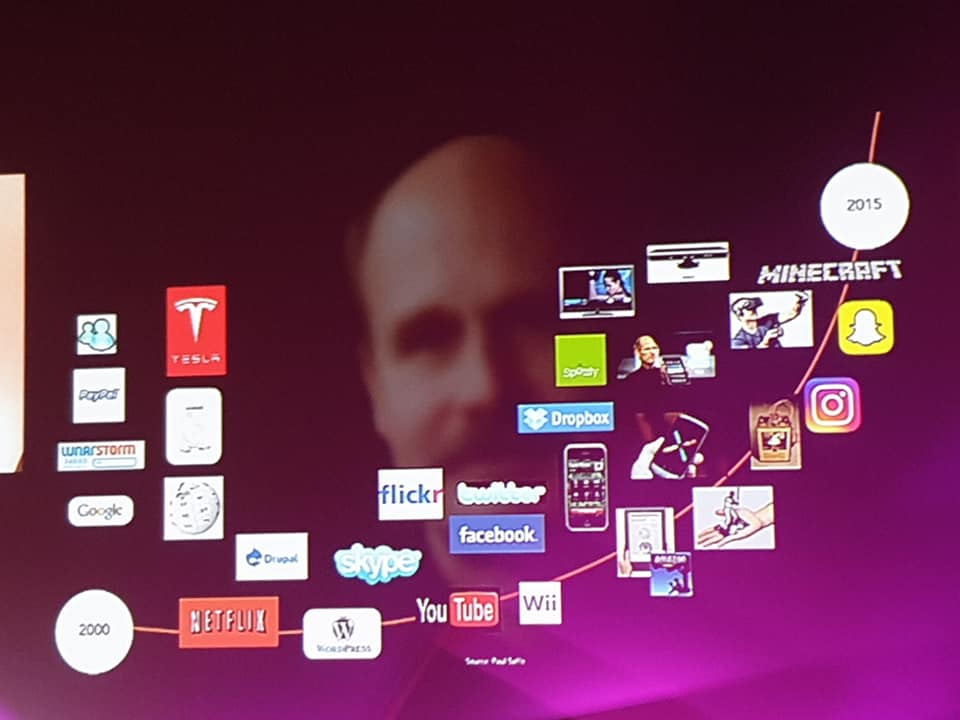
One of the most interesting conferences attended so far was Digital Takeover in Zagreb, whose international speakers provided attendees with a wealth of information and new concepts in the fast-changing digital world.
One of the most arresting slides was the one above, a snapshot of some of the biggest global brands and influences in our daily lives that simply did not exist back in 2000. How different life was then just 19 years ago! The slide has stayed with me ever since, as I look around the region at how things have changed, and at things that simply did not exist in 2000.
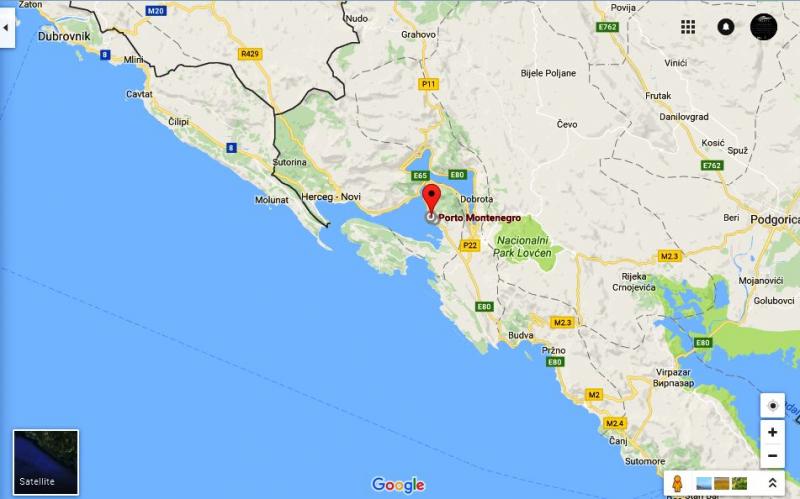
Things like luxury tourism in Montenegro. With the very notable exception of Sveti Stefan and gorgeous Kotor and its UNESCO bay, Montenegro has always been regarded as the poorer cousin of the magnificent Croatian coast, 1000-plus islands, and spectacular walled town such as the Pearl of the Adriatic itself. A town like Tivat, for example, was a mere village with few attractions for tourists back then, and while it was common for tourists in Tivat to visit Dubrovnik, the very notion of Dubrovnik tourists making the journey in the opposite direction was laughable.
No longer.
The arrival of Porto Montenegro just over a decade ago started a process which is slowly redefining the map of quality tourism in the region. As Dubrovnik grapples with mass tourism and packing in the cruise ships which generate great tourist arrival numbers but an ever-decreasing quality of tourism experience, over the border in Montenegro (just 21 km from Dubrovnik Airport), an altogether different story is emerging. And if you take a closer look, as TCN did this week, the story is mightily impressive.
Porto Montenegro was the first luxury destination for superyachts in the region. Built at a cost of 200 million euro as the brainchild of Canadian entrepreneur, the late Peter Monk, Porto Montenegro quickly became the go-to destination for the rich and famous in the yachting world. Conversations were starting in the international media that Montenegro was the next big thing in luxury travel.
Many people laughed. Montenegro? With its terrible roads, reputation as a Russian playground, and overbuilding? It is certainly true that the infrastructure needs a LOT of work, that there has been chronic overbuilding in places, much less so that it is a Russian playground these days. What is true is that a strategy of developing Montenegro as a luxury one is working. And far from being Russian investments, they are coming from all over the world - Canada, Qatar, Egypt and Azerbaijan, to name but four.
But how can Montenegro develop its luxury tourism with such poor infrastructure and with the overbuilding on its coast? It was something I decided to look into this week during my visit to the country, and I spent time with the stakeholders of Porto Montenegro, Lustica Bay, The Chedi, the management team of Mamula, and senior management from Portonovi. And a combination of those projects was eye-opening indeed.

It was during my visit to Portonovi (of which more below) that it finally hit me how the Dubrovnik connection was not only going to provide Montenegro with an abundance of luxury guests in search of things they sadly cannot find in Croatia, but also that Croatia's jewel will serve as a wonderful addition to Montenegro's luxury offer.
Walking around the impressive 900 million euro development, which is set to open its first Phase in July, I asked how guests would come from Croatia. The road from the border is not the most pleasant arrival experience, and there are often delays at the border (read the Total Croatia guide to crossing the border from Croatia to Montenegro).
"We will have several options apart from land transfers," came the reply. "People wanting to visit us from the old town of Dubrovnik will be able to do so by speedboat. We have a full customs house and passport control at the resort (see photo above, taken on a cloudy day this week). With our helipad over there, a helicopter transfer direct from the airport will take just minutes. And there will also be an option for a transfer to the border village of Molunat from the airport, and onward speedboat from there."
No need to worry about the transfer issues or poor infrastructure on the roads for high-spending guests. Now Dubrovnik and its airport with its millions of tourists and arrivals is the perfect catchment area for Montenegro.
The irony, of course, is that all this luxury tourism could - and should - be happening in Croatia, including Porto Montenegro itself. That project was supposed to happen in Croatia, but a certain politician allegedly required too much money to make it happen in Croatia.
And so Croatia's loss sadly looks set to be very much Montenegro's gain. For there is plenty more happening just a short boat ride away from the Pearl of the Adriatic and its accessible airport.
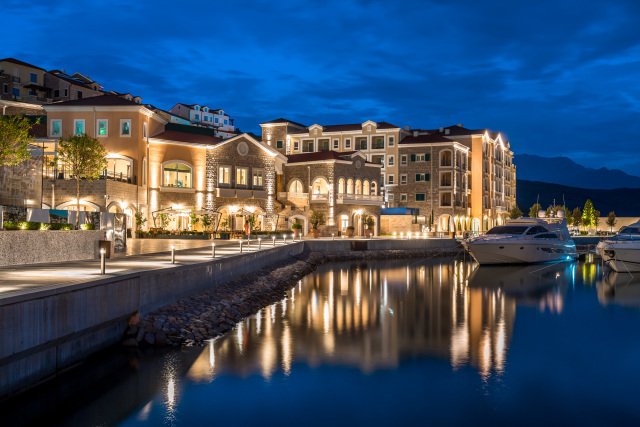
The biggest investment in Montenegro is Lustica Bay, a 1.1 billion euro project from Egyptian company, Orascom. A greenfield site of no less than 7 million m2 is being transformed into one of the luxury destinations in Europe. 7 luxury hotels, 2 marinas, one village of 2,500 inhabitants, and a Gary Player 18-hole golf course are but some of the highlights.
Also accessible by boat from Dubrovnik, and also with its own customs house, Lustica Bay is one more massive piece in Montenegro's crown. It was recently voted the Best European Property Development at the Luxury Network International Awards in Dubai. The opening of its flagship 5-star hotel, The Chedi Lustica Bay, last July has taken Montenegro's luxury tourism story one step further. Check out the opening party in the video above.
A key component of the strategy of all these major investments in Montenegro is the concept of building a community and injecting life into the developments, rather than just selling an apartment which is used two weeks a year. I am not aware of any such projects which have successfully managed to do this in Croatia, but Porto Montenegro, for example, has become an accepted extension of life in Tivat.
Lustica Bay will take that concept to the next level. Construction in Centrale has begun, a village of 2,500 inhabitants which will have many of the facilities one would expect to find for everyday life, including a school. And far from this being a Russian playground, Lustica Bay has so far sold to over 30 nationalities, with growing purchases from local Montenegrin buyers.
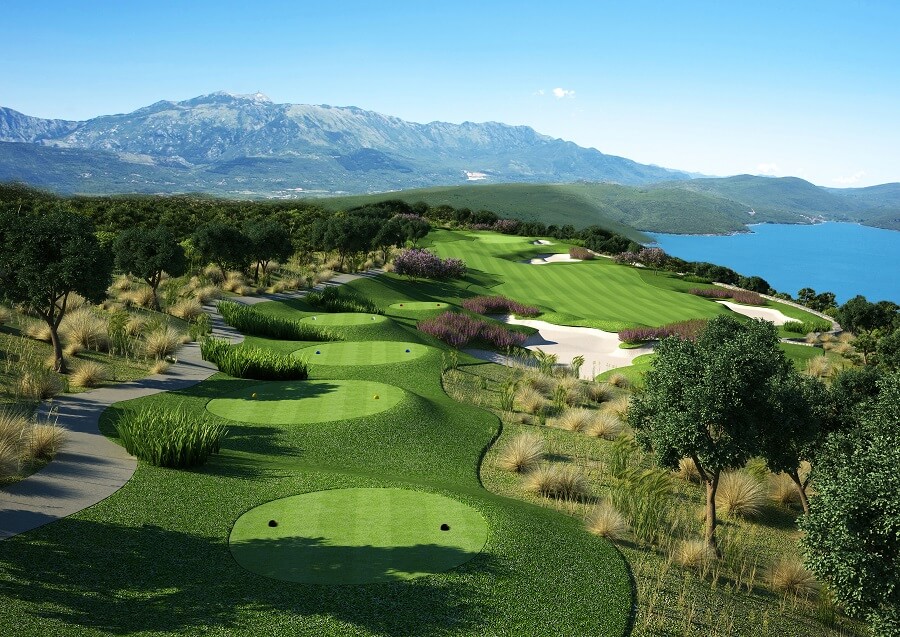
We will be doing a big feature on golf in Croatia and Montenegro shortly, but as the Croatian government faces an imminent $500 million arbitration loss over the failed Srdj golf project above Dubrovnik, construction of the 18-hole Gary Player championship course on Lustica continues apace. One more luxury addition that Dubrovnik's guests and airport passengers will be able to enjoy in the 'poorer cousin' over the border.
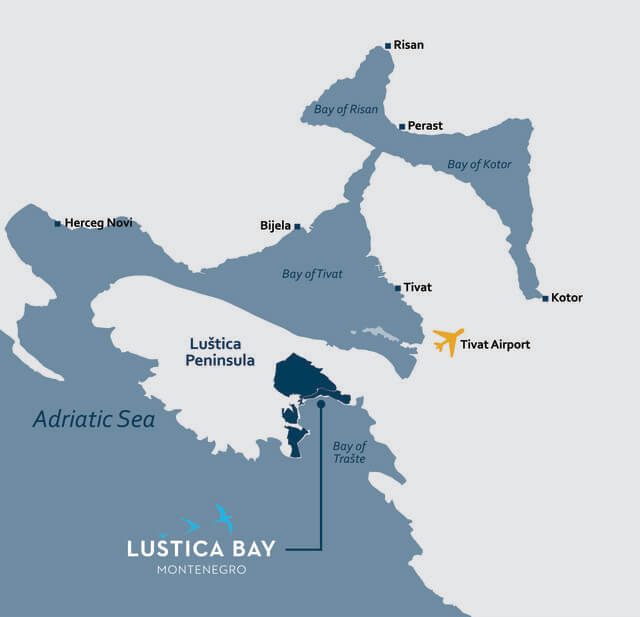
Accessibility to Lustica Bay and the other resorts is also possible from nearby Tivat, which is just a 10-minute drive away. With more than 1.2 million passengers in 2018, airlines such as Lufthansa have begun servicing Tivat, and airlines are waking up the possibilities of this year-round luxury destination.

And while the exclusive Aman resort of Sveti Stefan the other side of Budva may be the current poster child for heritage top-end tourism on the Montenegrin coast, there is a new kid on the block, as Mamula Fortress looks set to open as a 5-star resort in 2021.
An even shorter distance from Dubrovnik and its airport.
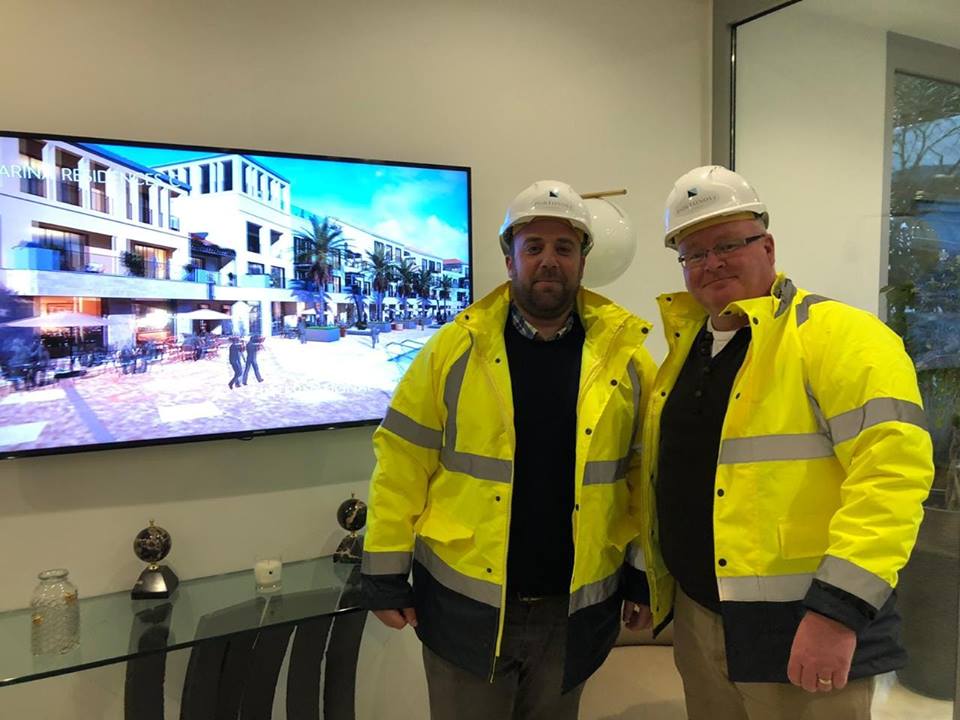
Although I know Porto Montenegro and Lustica Bay quite well, I had never been to Portonovi, and was very grateful to Chief Sales Officer Sherri Motazed for giving us an extended tour of the project, which will open this summer with its first phase, with the addition of the first One&Only resort in Europe in 2020.
You can get an idea of how it will look when finished from the animated video above.
And Dubrovnik and its airport really are quite handy...
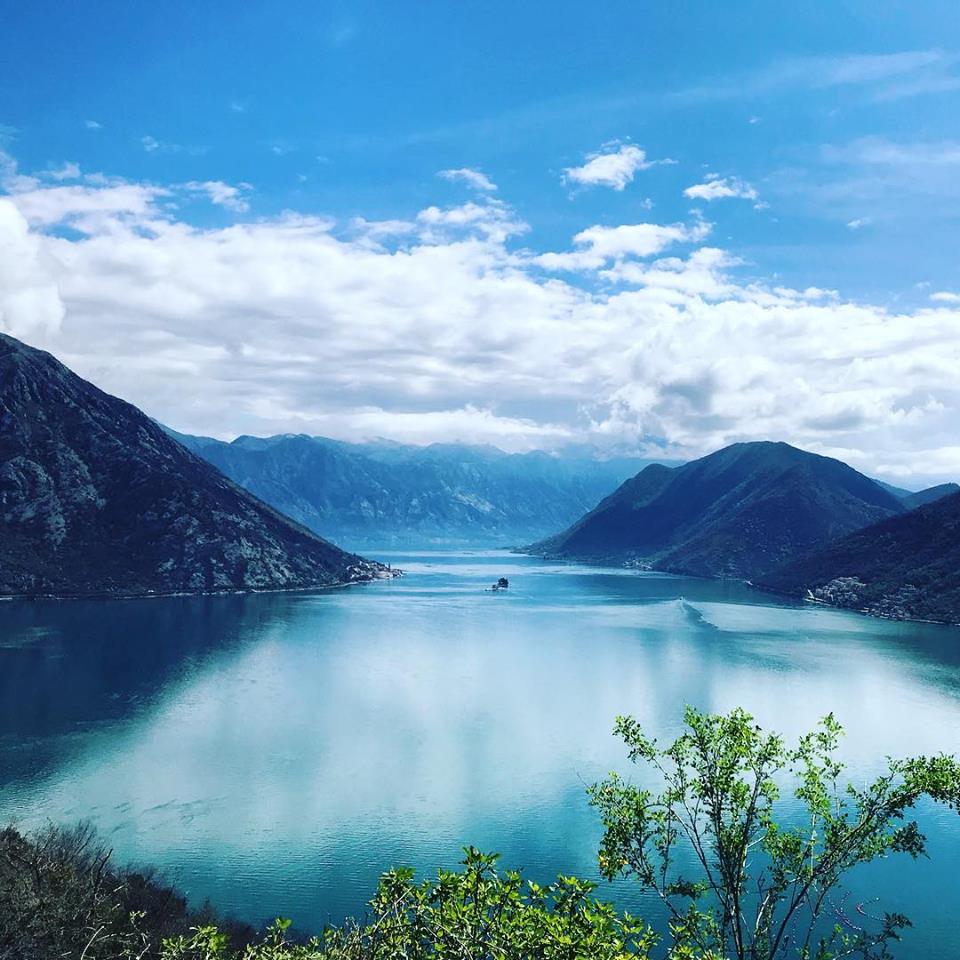
(Photo credit Marko Stefanek)
The slogan of the Montenegro Tourist Board is 'Wild Beauty' - the UNESCO World Heritage site of the Bay of Kotor is just one outstanding attraction for those looking to explore.
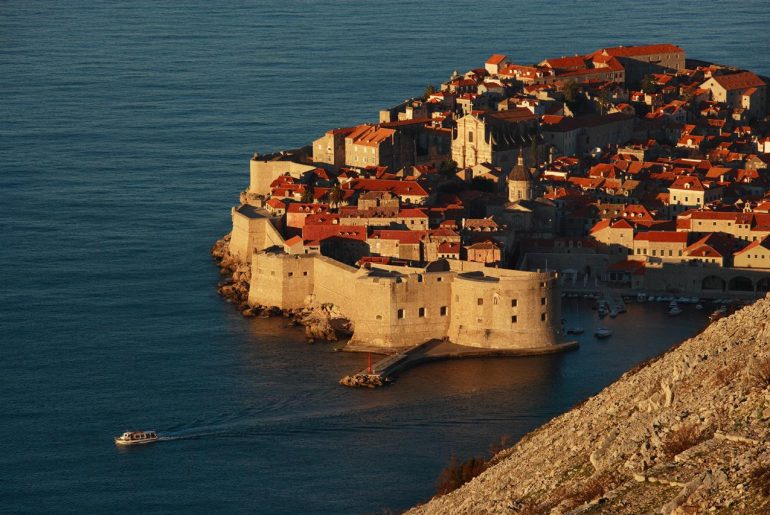
(Photo by Romulic & Stojcic)
As is another UNESCO World Heritage Site, Dubrovnik, just across the border.
Dubrovnik will always be the number one attraction in the region (learn more in our Total Croatia 'Dubrovnik in a Page' guide), it is simply too fabulous to be anything but number one. But as the famous city grapples with over-tourism and lack of luxury quality offer, the neighbours are watching and set to take advantage.
Aman, The Chedi, One&Only are some of the names which are already in luxury tourism in Montenegro, but not in Croatia. Word on the street in Montenegro from industry insiders this week will soon see Four Seasons, Ritz Carlton and Raffles added to that list, as well as others.
The Kings of Accidental Tourism in Croatia are busy trumpeting increasing tourism numbers from lower-spending guests. The cramming of tourists into its destinations is reducing the quality of the experience, while the battle for the luxury tourism market is all but lost. Business Insider recognised the strides Montenegro is making, listing it (along with places like Rwanda - learn about their incredible progress 25 years after a genocide before you judge) in the top 15 destinations for billionaires to visit in 2019.
Will any of the decision-makers in Croatia notice, or even care, let alone do something about it? For more information on just how far behind Croatia is in the luxury foreign investment scene in comparison to its 'poorer cousin', read more in Lessons from Montenegro: Penthouse Haludovo in 1971, Croatia's Biggest Foreign Adriatic Investment.
Me, I am off to buy a speedboat to start my transfer business from Dubrovnik to Montenegro.
As Investments Fall, is Croatia's Hotel Business Stagnating?
As Marija Crnjak/Poslovni Dnevnik writes on the 12th of March, 2019, Croatia's hotel sector stagnated last year in terms of the number of new rooms and in the sense of the level of entry of foreign hotel brands. A lot of this, but of course not all of it, is because Croatia has deemed it more profitable to build and invest more in private accommodation, an often ''grey'' area of Croatia's tourism industry with much lower taxes and a very poor level of general regulation. The level of major investments in new hotel rooms has fallen significantly, the number of which grew by a mere one percent in one year.
Due to all the above mentioned conditions, the market is still dominated by local investors, quite a few new names have appeared on the scene in the last year, which are still to be properly positioned as hotel brands, according to the annual global report on hotel chains in 22 European countries, "European Chains & Hotels Report 2019" by the Horwath Consulting House HTL. In the Republic of Croatia, more than a quarter of these hotels, more specifically 186 of them, operate under 43 brands in total, of which 22 are local and 21 are international brands.
"High seasonality and an unfavourable environment for investors, especially with [granting the necessary] permits, are the main reason we're in 159th place on the Doing Business list, they're the biggest barriers for foreign investors, who find it difficult to decide on taking risks in developing projects in Croatia, although a few positive examples have occurred on the market which do lead to more optimism,'' stated Siniša Topalović from Horwath's Zagreb-based office.
Horwath's analysis, which is based on the numbers from Real Capital Analytic, only takes into account investments of more than 5 million dollars, reveals that investment in hotels in Croatia is down by as much as 90 percent, from 59 million euro to a mere 7 million euro.
''The growth of hotel brands in 2018 in Croatia (4 percent) should be observed through the proper placement of several local hotel names, and only time will reveal whether or not these names will be branded on the market,'' Topalović explained.
Additionally, although Croatia can be statistically put in a very good position in terms of the number of brands operating here, the market situation shows that the level of activity is lagging behind some countries which are considered to be weaker than Croatia. A good example of that is Serbia and its increasingly popular capital city of Belgrade, which has received 40 new hotels since 2014, with growth in the hotel sector in Belgrade mainly based on foreign investments and globally respected brands such as Crowne Plaza, Radisson Blu and Luxury Collection.
Although the RevPar (revenue per hotel room) rose by an average of 16 percent in Croatia in 2018, this year a slow down is expected, caused primarily by other Mediterranean countries which are recovering from their respective problems to return to the market (this includes longtime tourism kings like Turkey and Tunisia).
The main potential seems to lie outside of the height of the summer season. Along with Serbia, where further growth is expected in the hotel segment, Albania has some great potential for foreign investors, Albania currently has the smallest share of branded hotels per total number of rooms (2 percent), and Montenegro, Croatia's neighbour to the south, also offers investors fairly favourable investment conditions and is very active in encouraging a more luxurious tourist product for the country.
Greece, known for its numerous financial issues, has entered the world's top fifteen tourist destinations despite the country's somewhat infamous ups and downs, with 150 new luxury hotels ''born'' in Greece in 2018, becoming a destination in which more than one in five hotels is in the category of 4 or 5 stars. Last year, the largest amount of investments in hotels went from the United States across the Atlantic to Spain (2.1 billion euro), following came transactions from Israel to the United Kingdom totaling over one billion euro, French investors also invested 951 million euro into the United Kingdom.
Despite all of the potentially (and likely) damning economic risks from Brexit, one of the European continent's most powerful countries, the United Kingdom, had a total of nearly 4 billion euro in investment in its massive hotel business. In 22 countries from the Horwath analysis, there were a total of 146,600 hotels on the market last year with more than six million rooms, with an average of 61 rooms per hotel. The least-branded hotels had Albania, only 12, while France has 3885 hotels in the hotel chain.
Make sure to stay up to date with our dedicated business page for more on investment and doing business in Croatia.
Click here for the original article by Marija Crnjak for Poslovni Dnevnik
Dubrovnik Highway: Talk of 800 Million Euro Project Reignited
After a decade of silence and complete inactivity, the Croatian Government is moving once again towards the temptation of a highway construction project towards Dubrovnik, a move initially started by former PM Ivo Sanader.
As Kresimir Zabec/Novac writes on the 2nd of February, 2019, after a rather unnecessarily lengthy and of course unclear title, the conclusion of the ''study documentation for the road connection of southern Dalmatia to the motorway network system of the Republic of Croatia from the Metković junction to the future Pelješac bridge and from the Doli junction to the City of Dubrovnik'' (yes you can take a breath now), which was adopted during Friday's Government session held in Dubrovnik, has actually led back to the beginning of re-activating the old plan to build a highway to Dubrovnik.
The last time constructing a highway to Dubrovnik was mentioned was way back in 2009, ten whole years ago, when a construction contract worth 3.675 billion kuna was signed in Osojnik in the presence of the controversial former Prime Minister Ivo Sanader, an amount which didn't include the VAT for the planned Doli - Dubrovnik section. Although the contracts were indeed signed, the money for this project was never secured, therefore the works never started and all in all, time went by and people simply forgot about it for the most part.
Although there are permits, projects and designs from that time that still exist and could be acceptable today, Croatian roads (Hrvatske ceste) will spend 4.06 million kuna this year to take a better look at the southern Dalmatian transport system in the area of Dubrovnik-Neretva County and its link with the existing highway network, and determine the feasibility of any highway construction from the existing Metković junction to the future Pelješac bridge, and then from Doli to the City of Dubrovnik. They'll also rule whether or not it is simply better to use the highway through neighbouring Bosnia and Herzegovina.
EU co-financing
Croatia's Minister of Maritime Affairs, Transport and Infrastructure, Oleg Butković, has already jumped the gun when it comes to the talks held on Friday, stating that the Ploče - Dubrovnik motorway will be built, but the question is when. He is counting on the EU being prepared to co-finance the project in the next operational period. However, some insist that a study is needed because the road image itself has changed over the past ten years, not only in southern Croatia, but also in Bosnia and Herzegovina. The motorway was built behind Ploče and the where the future Pelješac bridge will be, in neighbouring Bosnia and Herzegovina, the construction of part of the Vc corridor from Počitelj to the border with Montenegro through Popovo polje has also begun.
Compared to ten years ago, the highway would now be changed somewhat. Back then, the route went from Ploče to the border with Bosnia and Herzegovina at Neum and then continued on the other side down south to Dubrovnik.
It was estimated that eighty kilometres of highway from Ploče to Dubrovnik could cost around 732 million euros.
Today, it is assumed that the direction would go from the current Karamatići junction to the Pelješac junction, from where traffic will go down to Pelješac bridge. That equals approximately twenty kilometres of brand new highway sections. The traffic would continue along the new Pelješac road to the Doli junction, and from there 29.6 kilometers of highway would be built leading down to Dubrovnik.
According to the old 2009 project, a total of thirty objects needed to be built, of which there were ten viaducts, nine tunnels, and eight underpasses. Back then, the price of one kilometre of construction was 16.5 million euros without VAT, equalling a total of almost half a billion euros without VAT. The price of the construction of the highway from Karamatići to Pelješac is as yet unknown, but this section is also a very demanding part of the project as the route passes through the Neretva valley, so a high level of environmental protection will be required. Owing to all of the above, estimates are that the entire highway from Ploče down to Dubrovnik could stand at a massive 800 million euros.
Make sure to stay up to date by following our dedicated lifestyle and politics pages. If it's just Dubrovnik and the extreme south of Dalmatia you're interest in, give Total Dubrovnik a follow.
Click here for the original article by Kresimir Zabec for Novac.jutarnji.hr
Pavle Strugar, War Criminal Who Shelled Dubrovnik, Dies in Belgrade
Pavle Strugar, the war criminal who shelled Dubrovnik, causing not only wanton destruction and horrific damage to the UNESCO World Heritage Site, but also a terrible loss of life, has passed away in Serbia.
Strugar was born on the 13th of July, 1933 in Peć, in the then Kingdom of Yugoslavia, now Kosovo. The Montenegrin general served in the Yugoslav People's Army (JNA), undertaking various different roles, and eventually becoming the commander of the Second Operational Group of the JNA, which operated in southern Croatia, in 1991.
Under his command, the JNA monstrously attacked Dubrovnik in 1991, in a siege which caused tremendous damage to the city, and took the lives of both veterans and civilians. The terrible siege of Dubrovnik lasted until 1992, with Strugar retiring one year later, in 1993.
As Jutarnji reports on the 13th of December, 2018, the retired General Pavle Strugar has died in Belgrade following a short but serious illness.
Strugar was tried and sentenced for his actions, as well as for the deaths of civilians at the Hague tribunal, this was coupled with the fact that in 1991, he did nothing to prevent the horrendous war crime of the shelling of Dubrovnik. The Montenegrin initially attempted an appeal to his sentence, but that was later withdrawn.
Strugar voluntarily handed himself over to the Hague Tribunal in 2001, making a name for himself as the first Serb or Montenegrin to make such a move. Because of his part in the criminal shelling of Dubrovnik, a beloved UNESCO World Heritage Site, he was sentenced to a pitiful 7.5 years in prison, and of course, he didn't even serve that, after serving a mere two-thirds of his sentence, he was released back in 2009.
Strugar will be buried this Saturday at the Bežanijska cemetery in the Serbian capital, according to a report from Mondo.rs.
Make sure to stay up to date with our news page for much more.


